POTA Activation #42: A CW Activation on 4 Bands and in 2 Parks Before Work at Captain John Smith Chesapeake NHT and Star-Spangled Banner NHT (DC) (1/26/2023)
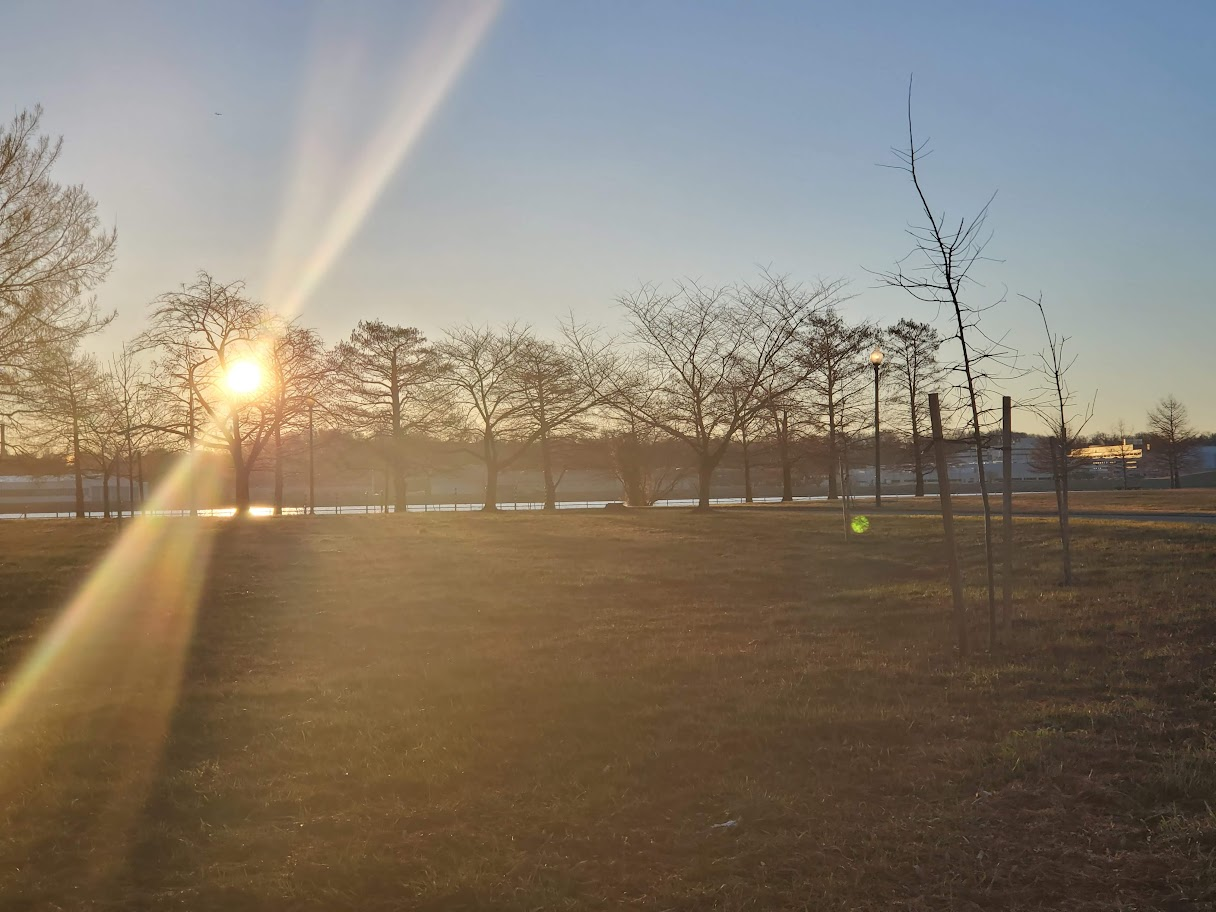
Parks on the Air has a way of motivating you. There are dozens of awards to chase, personal statistics to grow, the fun of activating a park, and interacting with people around the globe. So, I decided to see how early I could get up and see if I could get some Early Shift contacts in and work toward a new award. I set the alarm early and got out to the park as the sun was rising. As I drove to my operating position the sun was shimmering over the Washington channel and dozens of cyclists and runners were taking the loop around Hains Point. There was even a peloton of Metropolitan Police Department officers doing a group ride that came around several times. DC was showing off, and I loved every minute of it.
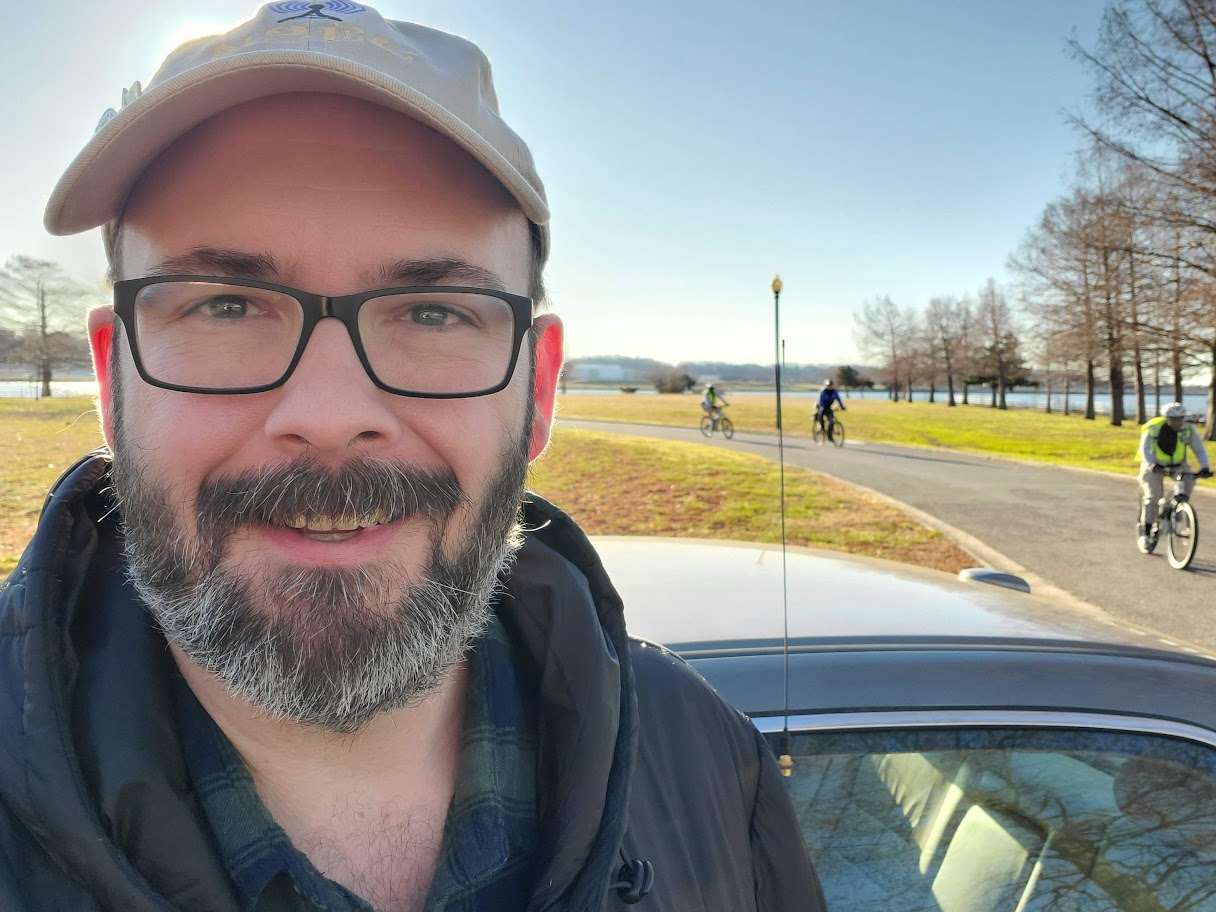
The previous day had been decidedly dreary and wet, so with a clear morning in the 40s, people were making sure to get out and savor the sunshine. I was no exception to this, and was enjoying feeling the warmth of the early morning sunlight stream through my car window. This was the kind of morning that makes up for the ones that are cold, wet, and gray. On the way in I had heard several QSOs on 40m CW, so I decided to start there. I didn't have a lot of time until the Early Shift ended (8AM local), so I thought starting on the "easy" band would give me the best success.
I did have an ace up my sleeve, though. I had much more time to linger this morning, due to my earlier departure. So I was in it to spend some time and savor my moments in the sun along the banks of the Potomac and Anacostia Rivers. I also had another ace up my sleeve. I had recently joined a text group with some friends from the Long Island CW Club that is particularly active, even in the early hours of the morning. So, in addition to posting a spot on the POTA spotting page, I dropped a note to my friends in the club that I was starting an activation on 40m.
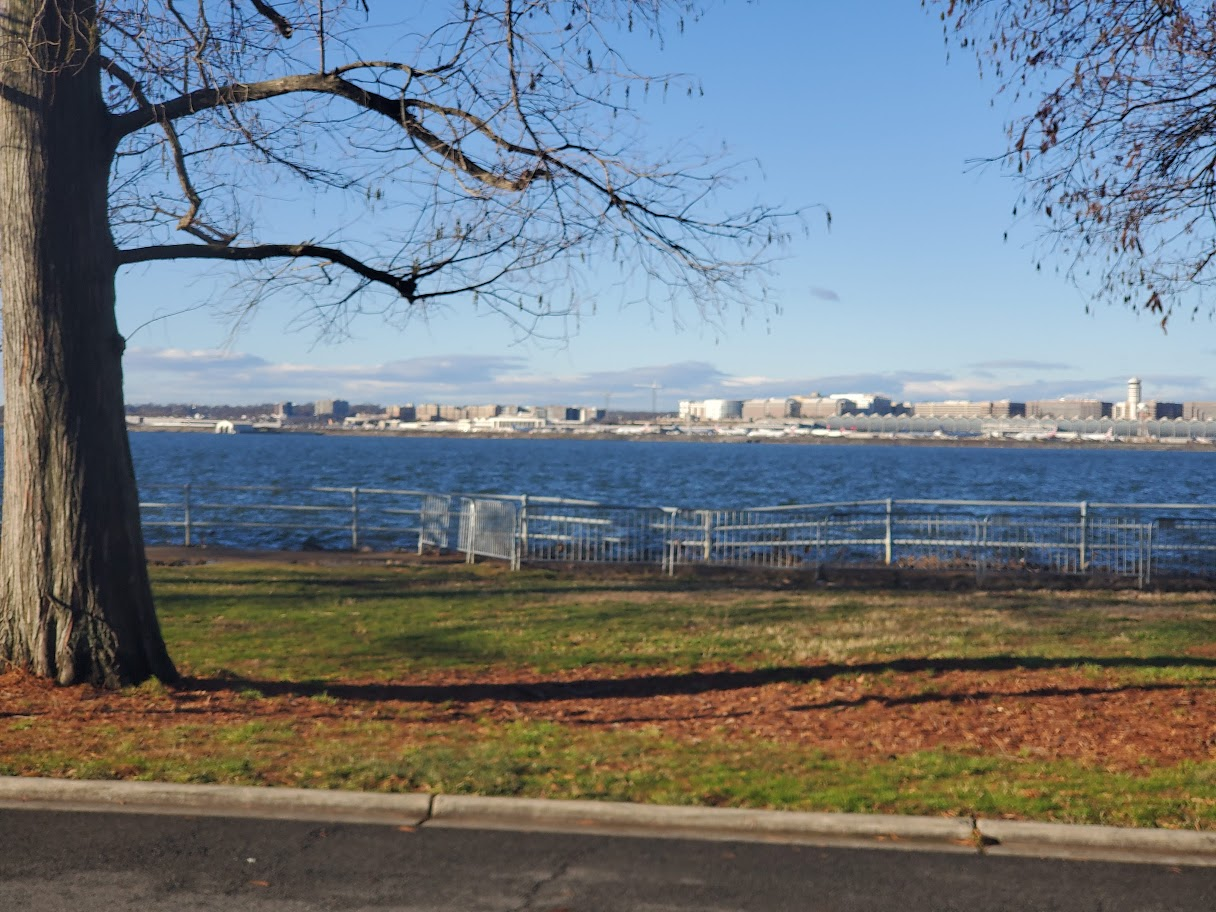
Mike, N2PPI, the leader of the text group and an avid POTA activator himself, came back to my CQ with a 599 both ways from New York and said hello. It was nice to have him be the first contact in the log. Next up I got calls from Pennsylvania, Michigan, New York, and Kansas. Next up, I heard from Ed, N2GSL, another club member from New York, who gave me a cordial greeting and a 599 both ways. I was also pleased to hear that this was his first time getting one of the parks I was activating. Glad I could get him in the log, too. After that I got a call from WD4DAN, Dan, in Georgia. He would end up working me on all 4 bands I activated this time, a lot of fun. He also is the developer of a script that allows you to put live POTA data on your QRZ page, which is a very helpful tool. Thanks to Dan for hunting and all his hard work! One more call from North Carolina would close out the Early Shift on 40m, but I kept going, making contact with Ohio, a pair of New York stations, Pennsylvania, Massachusetts, Virginia, and finally a station on Ohio.
The calls slowed down a bit, so I decided to hop up to the 30m band and see what I could do there. After a few CQs I got contacts from Tennessee and from Brian from QRPARCI in Indiana who was working QRP, as usual (72!). Always fun to get him in the log. I also got my second contact from WD4DAN in Georgia (Thanks Dan!), as well as a pair from Indiana, Tennessee, Ohio, Indiana, and Oklahoma. Once again the calls slowed down, so I decided to move on up to the 20m band and started calling CQ. I had a bit of a false start when after calling QRL? a few times and then calling CQ, a really weak QSO came out of the noise. I had been spotted by the RBN, but I didn't want to interfere, so I moved up 2 kHz and started calling again. After a minute or so, the RBN caught up with me and I got responses from Arkansas, and then New York. Next I got a very fast call from a station in Poland who was coming in 599 both ways -- nothing like some morning DX! He was followed by New York and Indiana and then another DX station, this time from England! All from the lid of my trunk on a "compromised" antenna. Yeah, I love this thing. Next we got back stateside with Oklahoma, the third call from Dan in Georgia, and one last call from Missouri.
The time was getting late and the calls on 20m slowed, so I wondered ... could I get in another band before going to the office? Well, there was only one way to find out. I changed the band to 17m, spun the VFO to a clear frequency, spotted myself, and gave it a go. I called for a few minutes and thought I was going to get nothing. After all, this was a bit early for 17m ... but I had heard some SSB stations on the top end of the band just moments before and the MUF was well above 18 MHz for me ... so there had to be a chance. Who came the rescue, well, none other than Dan WD4DAN, of course! Fourth band of the day! I gave him sincere thanks, and his contact was followed by a station in Florida. I called a few times, to no avail, and after looking at the clock, realized it was time to head to the office. I called QRT, snapped a few photos, and called it an activation.

What an amazing way to start the day. Savoring the sunrise over the Potomac, talking to friends around the world, and challenging what you think is possible. All-in-all I made 35 contacts on 4 bands in 3 countries from 2 parks in just under 1 hour. Thanks to everyone who hunted, this one was a whole lot of fun.

International Activation QSO Map: Green Pins = CW / Green Lines = 40m, Orange Lines = 30m, Blue Lines = 20m, Purple Lines = 17m
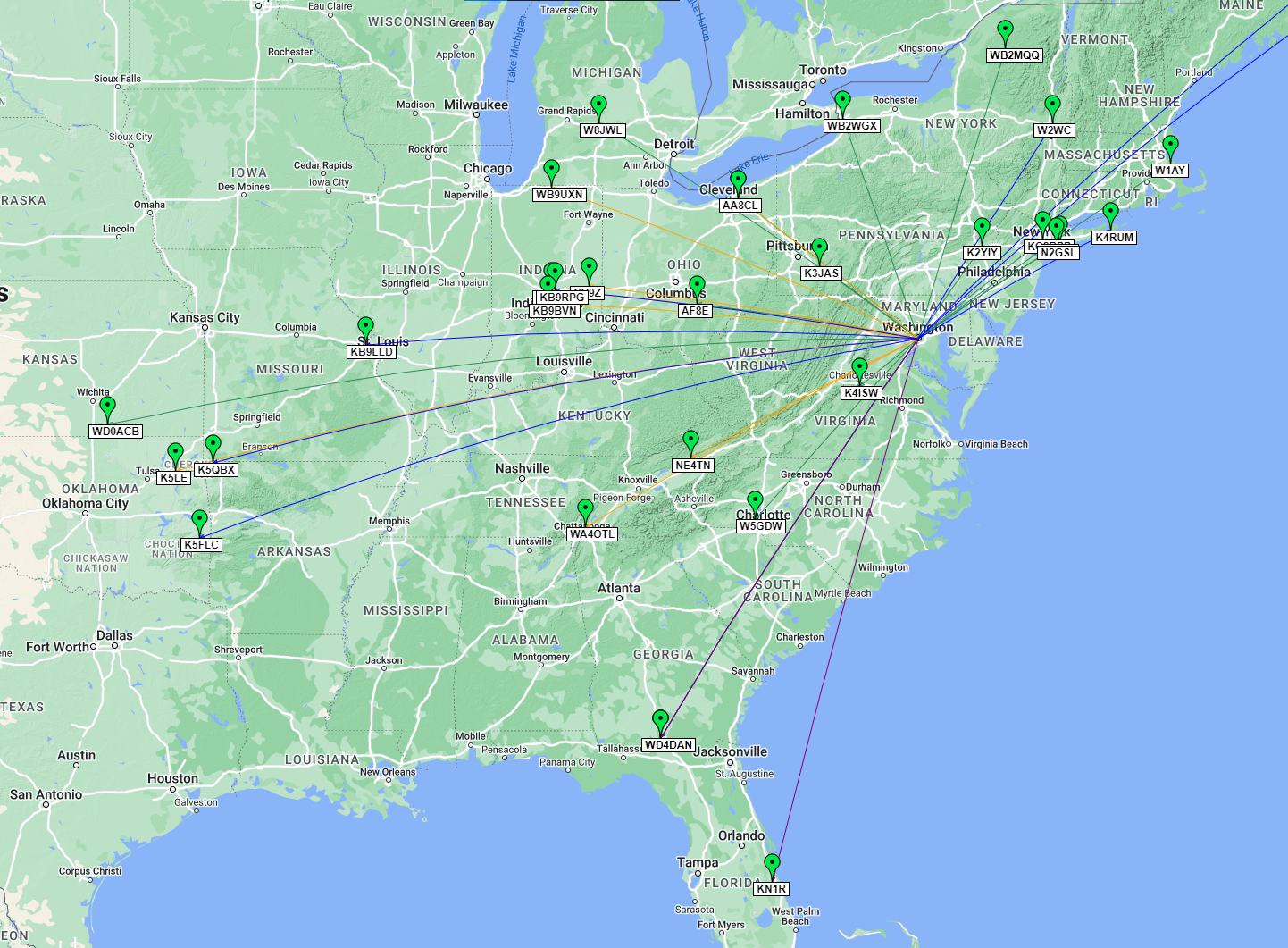
US Activation QSO Map: Green Pins = CW / Green Lines = 40m, Orange Lines = 30m, Blue Lines = 20m, Purple Lines = 17m
Gear used in this activation
- Yaesu FT-891
- Yaesu ATAS 120A Antenna
- CW Morse SP4 POTA/SOTA Mini Morse Code Magnetic Paddle (N0SA Designed)
- 2006 Honda Accord EX V6
- Samsung Galaxy S10+
- HAMRS Logging App
Posted on January 26th, 2023
POTA Activation #41: A Mobile Late-Shift Support Your Parks Weekend 4-fer at George Washington Memorial Parkway, Captain John Smith Chesapeake NHT, Star-Spangled Banner NHT, and Potomac Heritage Trail NST (VA) (1/21/2023)
I always like to participate in the Support Your Parks Weekends for Parks on the Air, but for the Winter 2023 SYP weekend I was going to be out of town on Saturday and flying back home on Sunday. I had the unfortunate realization that I would not be likely to be able to pull off an activation if I stuck to my normal activating hours. I had to get on the road early on Saturday, so the only window I had was actually on my Friday shortly after the start of the Zulu day.
I went out to a nice dinner with the family mere feet away from the George Washington Memorial Parkway at a restaurant called Cedar Knoll. When there is daylight it has commanding views of the Potomac. It was dark out, so all we could see were the headlights of cars making their way down the Parkway. Our dinner was delicious, and afterward I drove a little bit down the road to a pull-off that was right by the water and the trail, giving me a 4-fer from the car. My normal spots would not have worked as those parts of the park were closed. But in this particular location, it was right on the parkway itself, which never closes.
It was pretty dark out, so I don't have any pictures of this activation, but the stars were out in full force and we saw countless planes coming in to Washington National Airport on the Mount Vernon visual approach. We also saw the lights of a few boats on the Potomac slowly making their way to their destinations.
Before leaving the restaurant I had looked at the MUF map, and it looked like a 20m activation on CW might have been possible with the SFI being well over 200, so I decided to start (and I was hoping to end) there. This would be a quick one, I hoped. After setting up and spotting myself, I started calling CQ on 20m and after a couple minutes I got a call from Kansas, followed by Texas, Oregon, and Colorado. The going got slower and I got a contact in California, then Texas, and then I got nothing for many minutes.
Nothing on the East Coast followed by weakening signals on the West and then radio silence made me think that the band may have died on me as the country got blanketed in inky darkness. I moved down to 30m. I was re-spotted by the Reverse Beacon Network pretty quickly, so I was hopeful that I would get some luck there. I eventually did get a strong signal from Missouri, although he wasn't hearing me anywhere near as clearly as I heard him. After that I called and called to no avail. I had 8 contacts, but I needed 10.
Time to move down once again, this time to 40m. After finding a clear frequency (which was a bit harder than on 20 and 30 as this band seemed quite a bit more alive), I started calling CQ and after a slow start was greeted by a call from Brian from QRPARCI coming in 599 with a QRP signal from Indiana. It is always great to get him in the log (this was the second time he hunted me this week), and he always sounds super strong, even at QRP. I smiled when he sent a 72 letting me know he was low power. Next up I heard from New York and I had a valid activation, but now I had a mini-pileup. So I got contacts from Illinois, Alabama, Georgia, Illinois again, Michigan, and finally a contact with Woodbridge, VA that came in super quiet, so we must have had just enough groundwave propagation to make it happen, even though we were just a few miles apart.
In all, in just over 35 minutes I had 16 contacts on 3 bands ranging from the West Coast to the Canadian border and down to the Gulf of Mexico, all on the late shift. I had a few moments where I doubted whether I would make the activation, but perseverance prevailed. Since I had a tired and full crew, I called it an activation and headed on home. Another Support Your Parks Weekend activation (or 4) in the books.
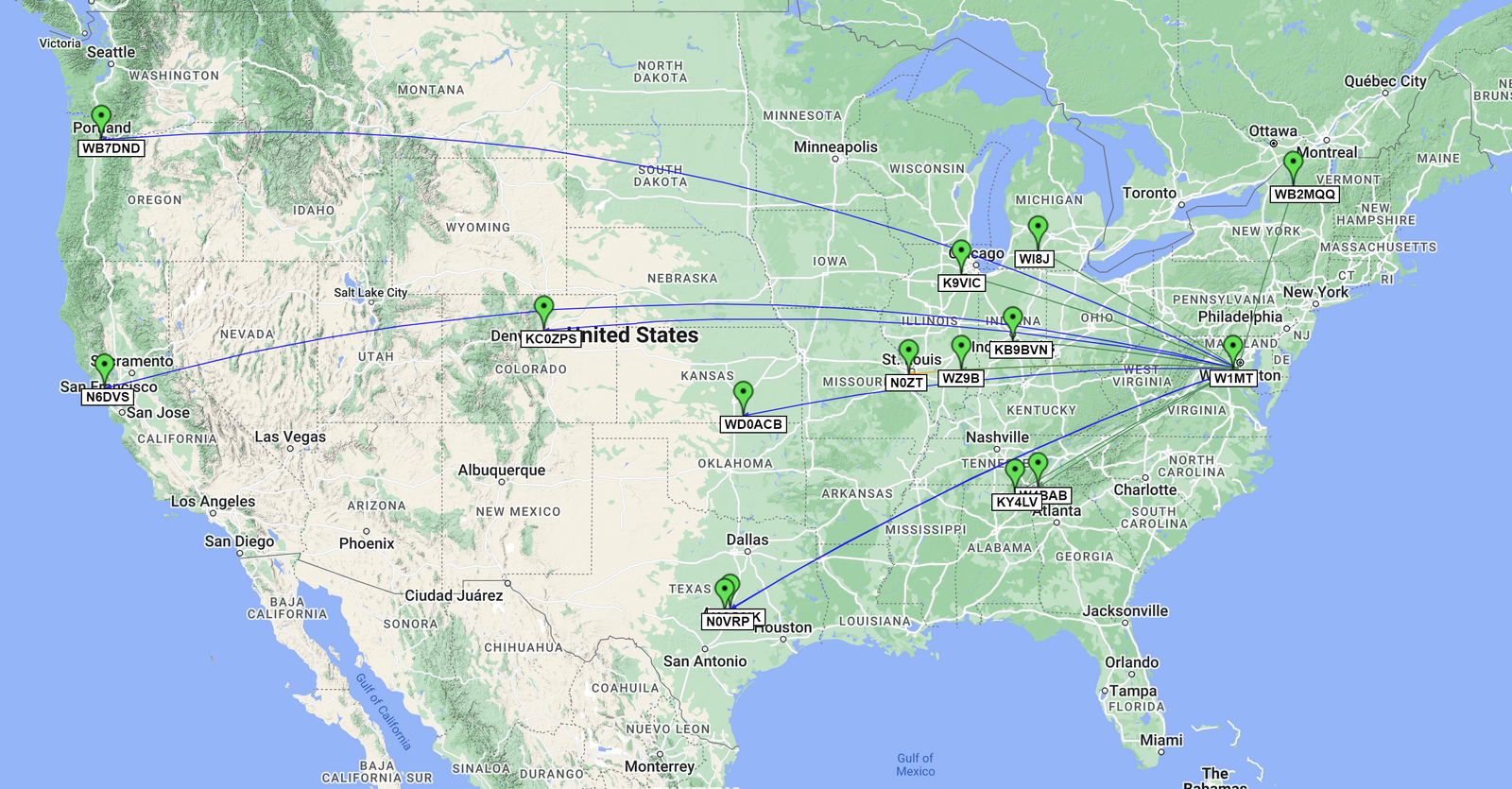
Activation QSO Map: Green Pins = CW / Green Lines = 40m, Orange Lines = 30m, Blue Lines = 20m
Gear used in this activation
- Yaesu FT-891
- Yaesu ATAS 120A Antenna
- CW Morse SP4 POTA/SOTA Mini Morse Code Magnetic Paddle (N0SA Designed)
- 2006 Honda Accord EX V6
- Samsung Galaxy S10+
- Flyboys Classic Kneeboard
- Gasuuo College Ruled Spiral Notebook
- Sharpie S-Gel Retractable Pen
- HAMRS Logging App
Posted on January 21st, 2023
POTA Activation #40: 2-fer Commute to Work on 20m in Captain John Smith Chesapeake NHT and Star-Spangled Banner NHT (DC) (1/18/2023)

There is nothing like a POTA activation first thing in the morning. I knew I would have to come into the office today, so last night I was already planning to get a pre-work activation in the books from what is fast becoming one of my favorite roll-up activation sites in the District of Columbia. This morning the weather did not disappoint with mild (for Winter) temperatures around 42 degrees F and mostly clear skies. On the drive into DC I was treated with a beautiful sunrise over the Potomac river and fairly light traffic. I also got to chat with my buddy Corey on the local repeater who just upgraded to General (Congratulations Corey! Can't wait to get you in the log for POTA).
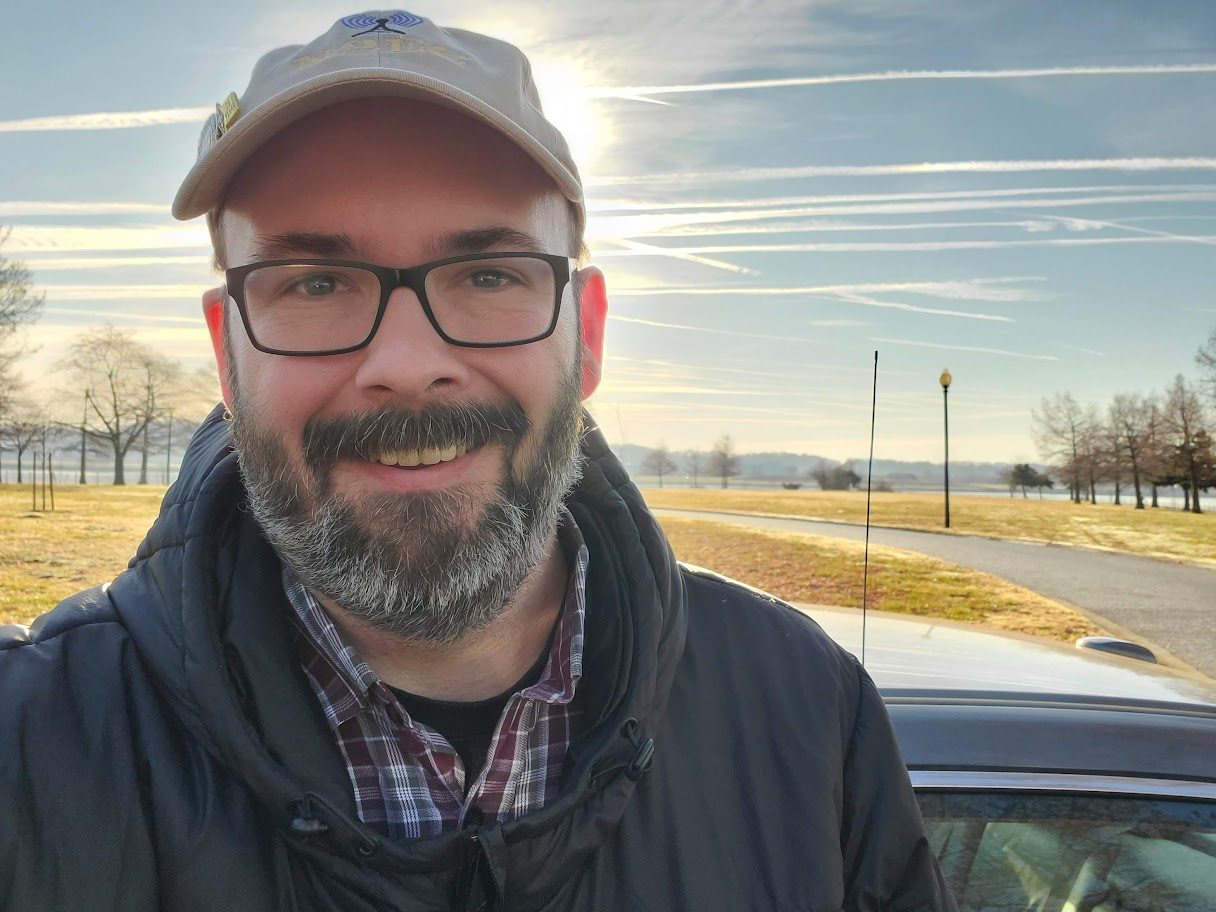
While I was having my morning coffee, before heading out for the day, I looked at the solar weather forecast, and saw that the SFI this week is well over 200, so I hatched a plan to give some early morning 20m CW a go to see what I could do. With luck I'd get some of the Eastern half of the States as well as some European DX. On the drive in I didn't hear a lot of activity on 20, but I did hear some, so I had my plan.
When I rolled into the parks I setup in my spot nestled by the water just across from Washington National Airport, found a clear frequency, and gave myself a spot on the POTA network. At first, I didn't have any takers, so I was concerned maybe the propagation magic was not in my favor. I kept at it though, and I saw Reverse Beacon Network spots coming in from Europe and the US with respectable signal-to-noise ratios. When all else fails, perseverance prevails ... so I kept calling CQ.
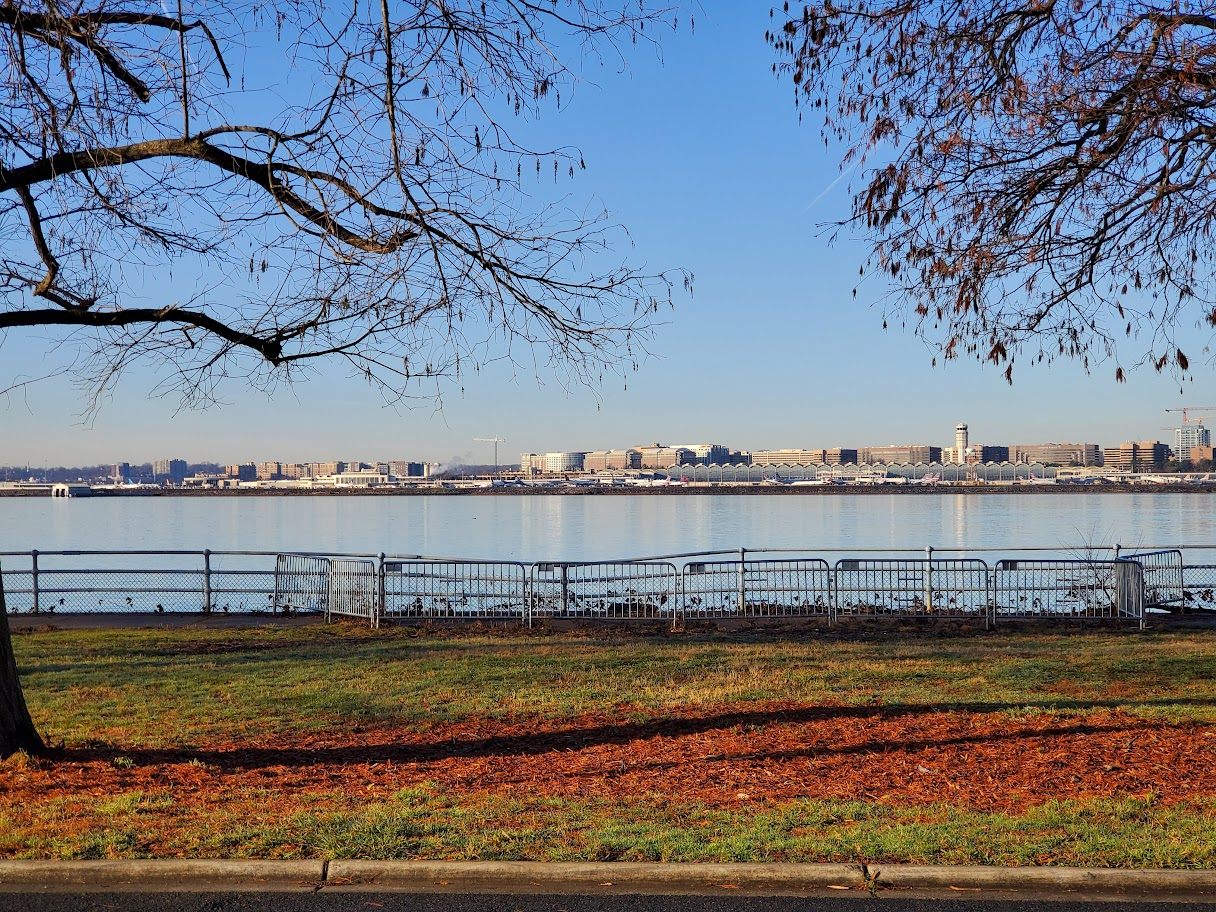
Finally, after a few minutes I got my first reply from super-hunter Mike, CU3HY, in the Azores. He was a solid 599 on my end and he sent me a 559 from the middle of the Atlantic Ocean. Things were starting to look up. Next I got a call back from Florida with 599 both ways and then had a few minutes of calling CQ with no response. The silence was broken by DX in Poland with 559 sent and 599 received. Fantastic! After that the pace quickened and I got responses from Texas, Tennessee, Texas, New York, Tennessee, Florida, Illinois, Georgia, a pair from Illinois, Georgia, Maine, Texas, Iowa, Alabama, Texas, Tennessee, and Massachusetts. On the last few of those calls I was getting some pretty intense QRM. A station with a pretty big signal had set up camp just up the band from me, so I decided to find another frequency and found some quiet 12 kHz up.

Thankfully, I was on CW, so the RBN re-spotted me quickly and I got a call from Kyle, AA0Z of YouTube fame, 599 both ways from Missouri. Next up I heard from Indiana, South Carolina, Florida, North Carolina, and last but not least, Minnesota. I looked at the clock and realized it was time to call QRT and make my way to the office. As I sometimes do, I sent "QRT QRT de N2EC TU (dit) (dit)" which basically means I'm stopping my transmission, thank you. The dit dit is a pleasantry that many CW operators do at the end of their transmissions that comes from the last two parts of "Shave and a Haircut, Two Bits". I don't expect a response, but I got one from my last contact in Minnesota who had been listening to my last CQs after our contact. That put a smile on my face and I sent another "TU (dit) (dit)" and called it an activation. CW operators are the best.
All-in-all I got 27 contacts from 3 countries in the log in 42 minutes -- not quite the rate I usually get from the lower bands in the morning, but very much a success. It was great to get some morning DX in the log, and fun to get some familiar calls on there too. The Polish DX was 4,537 mi (7,301 km) away and Mike in the Azores was 2,649 mi (4.263 km) from me. The farthest US station was 1,314 mi (2,114 km) in Texas. Not bad for a vertical on my trunk! As Sunspot Cycle 25 keeps rising, maybe I can activate even higher bands before work. Could be fun.
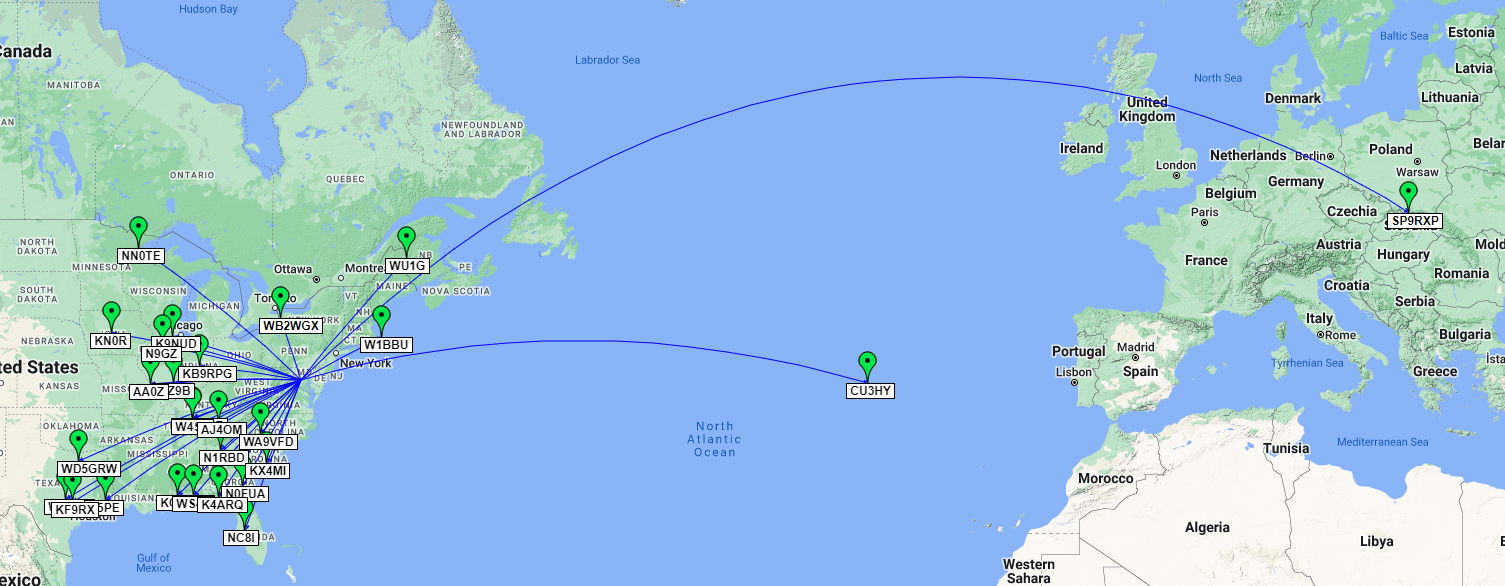
Activation QSO Map: Green Pins = CW / Blue Lines = 20m
Gear used in this activation
- Yaesu FT-891
- Yaesu ATAS 120A Antenna
- CW Morse SP4 POTA/SOTA Mini Morse Code Magnetic Paddle (N0SA Designed)
- 2006 Honda Accord EX V6
- Samsung Galaxy S10+
- Flyboys Classic Kneeboard
- Gasuuo College Ruled Spiral Notebook
- Sharpie S-Gel Retractable Pen
- HAMRS Logging App
Posted on January 18th, 2023
POTA Activation #39: Another 2-fer Commute to Work in Captain John Smith Chesapeake NHT and Star-Spangled Banner NHT (DC) (1/10/2023)
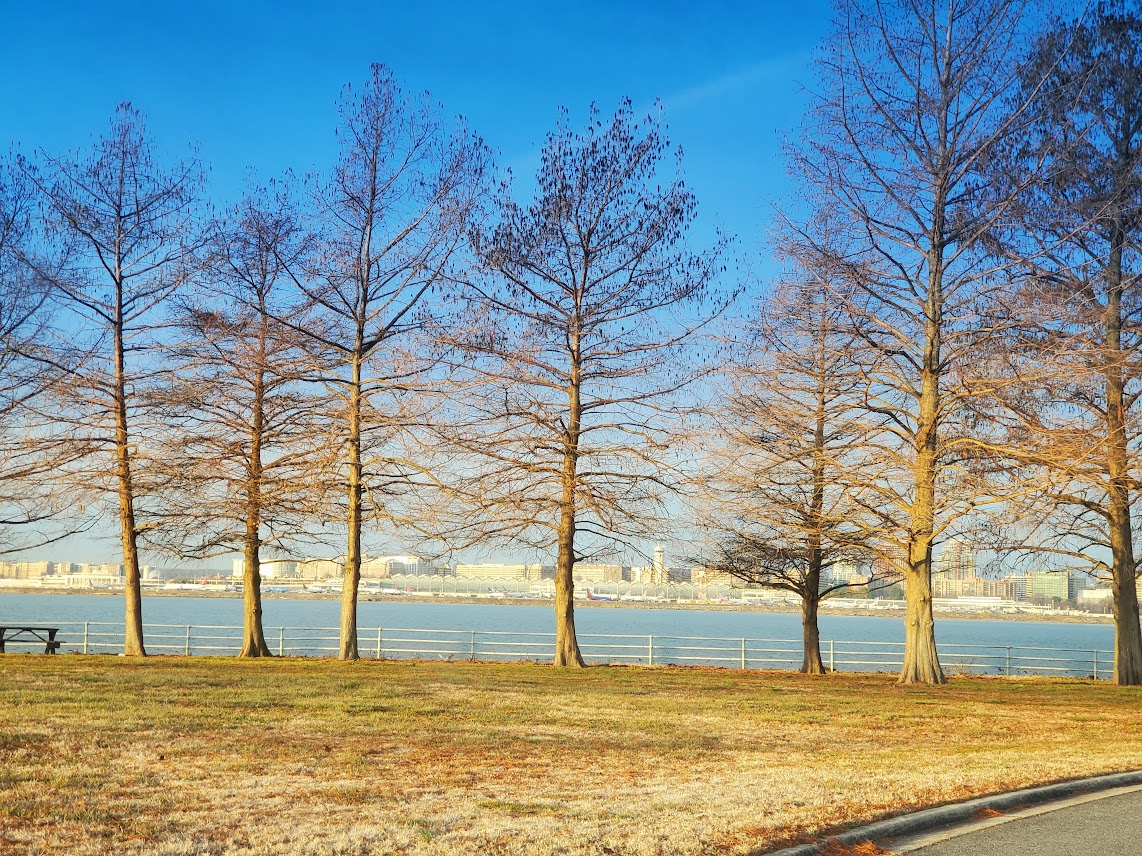
My new mobile HF setup has really been paying dividends. I've been enjoying listening in on the air to CW QSOs as I am going down the road for great code practice and hearing people talk all around the world. But perhaps the most fun part has been how easy it has become to roll into a park, adjust my antenna, and get on the air for a Parks on the Air activation. There are now all sorts of opportunities to get on the air that were simply impossible before. One situation that has been particularly fun for me is activating in the morning before I get into work on days when I'm driving into the District of Columbia.
It seems like any time I activate DC it is as though I've got an extra 6 dB of gain on my setup. Since it is the Hunted All States wildcard, people go pretty crazy when it is on the air. So even at 7-8AM on CW, you'll get instant pile-ups. If I can get up even earlier, maybe I can get some Early Shift awards, too. I've found a few great spots to activate not far away from my normal commuting route that are 2-fers that are easy to activate and surprisingly quiet for rush hour in one of the busiest metropolitan areas in the country. Watching the sun rise over the Potomac and the world spring to life as daylight banishes the darkness is a wonderful way to start the day.

Today I decided to go back to Hains Point to activate Captain John Smith Chesapeake NHT and the Star-Spangled Banner NHT on 30m CW. Hains Point is a beautiful peninsula just across from Washington National Airport that features a loop road that goes along the coastline that is very popular with the cycling community in DC. There are numerous pull-offs along the way where you can park, bathroom facilities, paths, picnic areas, and beautiful views across the Washington Channel to the East and Washington National Airport and Gravelly Point to the West. In its center is a large municipal golf course run by the District of Columbia. In the pre-work hours, a visitor practically has the place to himself, save a few cyclists enjoying the views and getting some miles in on the pancake flat loop.
I had done my last activation at this spot on 40m, and it worked well, as you would expect. But I was eager to give a higher band a try to see what could be done. I elected to give 30m a go to see if I could get some stations a bit farther out this time. I got the ATAS extended to the right length and got a pretty good match, called QRL?, spotted myself on the POTA spotting network, and started calling CQ.

I didn't have to wait long to get a response. The first station I heard was out of Texas with a solid signal. Based on his report to me, he was pulling me out of the noise, but we were able to make the contact, so we were off. Next I had a contact with Tennessee 599 both ways, so I thought to myself, I must be doing alright. Then the pileup came, and I heard from Florida with another strong report, Georgia with a 559 both ways, Kansas with 599 sent and 539 received, and a 599/539 in Illinois. Next up were Kentucky, New York, Brian from QRPARCI in Indiana was next with a very solid 559 on QRP (of course), followed by Marc in MD who is a prolific hunter who always does a great job of getting into my logs (thanks for being out there). Marc was a 559 both ways, even with us being so close, so I was glad to get him in the log. Next up was a booming station in New Hampshire, another in Florida, and another station in NY who I heard loud and clear but who had me in his noise, but all was successful with that QSO.
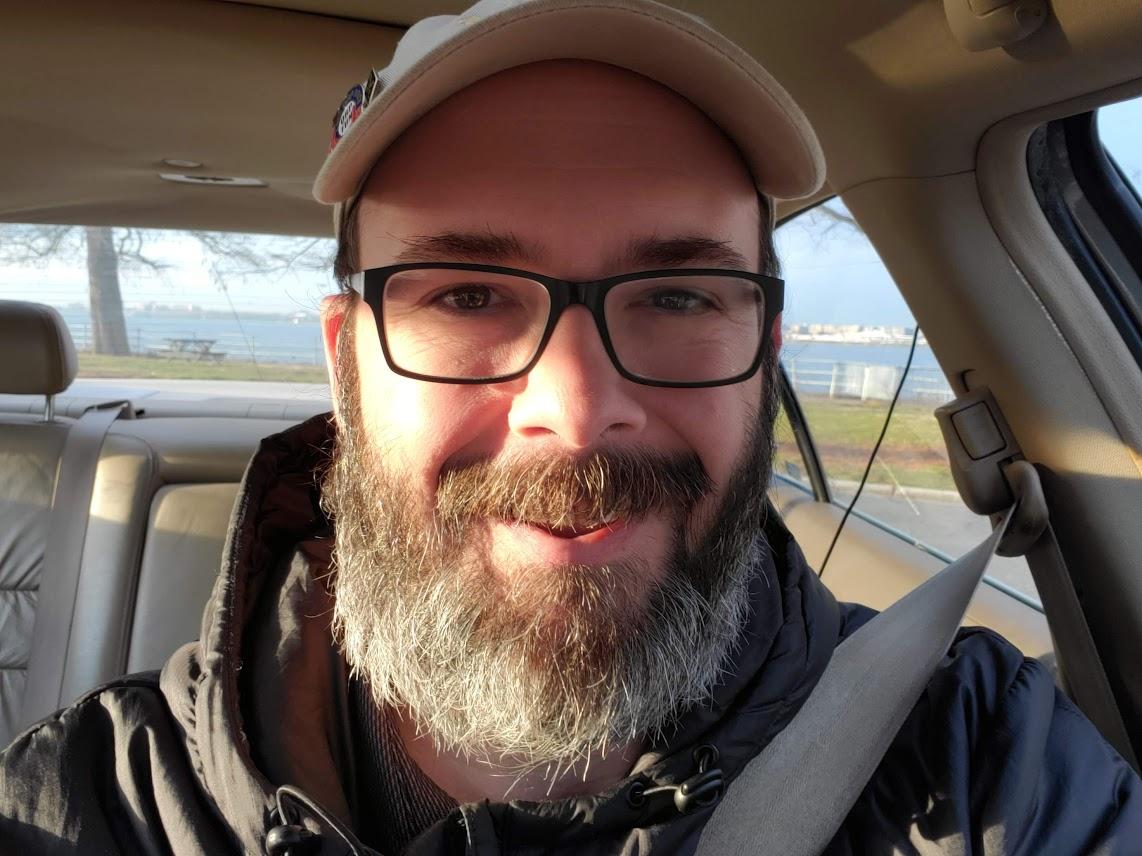
The contacts kept rolling in with a pair of 559 both ways reports with Florida, followed by a very weak but workable 529 sent and 339 received with Virginia. Next we got some longer distance contacts with a 599 reception from Minnesota with a 479 from him, and a 599 signal from Arizona who was hearing me 339. Not bad at all. I made contact with a frequent hunter in Tennessee 599 both ways, a station in Arkansas 599 both ways, and finally a station in Pennsylvania I heard 529 who heard me 339 -- glad we were able to make the contact. I called CQ a couple times as things slowed down, looked at the time, and decided to call it an activation and call QRT to make my way to the office.
All in all I made 21 QSOs in just over 21 minutes. Definitely a lot of fun and a great way to start the day. This was also the first activation with a new bit of gear I recently picked up, the Flyboys Classic Kneeboard. Although I mostly just used it as a platform for my phone on this activation, it is a neat little item that straps to your leg to allow you to have a surface to write on while you're seated. My understanding is that they're popular with pilots who use them to take notes and to have flight instructions attached to their leg so they don't have to mess with them as they're flying. I teamed it with a spiral notepad that should allow me to easily flip pages if I want to paper log. Having a flat platform to rest my phone on was definitely helpful, and it is nice to not have to worry about stuff falling on the floor.
Until next time, thanks for being out there and 73.

Activation QSO Map: Green Pins = CW / Yellow Lines = 30m
Gear used in this activation
- Yaesu FT-891
- Yaesu ATAS 120A Antenna
- CW Morse SP4 POTA/SOTA Mini Morse Code Magnetic Paddle (N0SA Designed)
- 2006 Honda Accord EX V6
- Samsung Galaxy S10+
- Flyboys Classic Kneeboard
- Gasuuo College Ruled Spiral Notebook
- Sharpie S-Gel Retractable Pen
- HAMRS Logging App
Posted on January 10th, 2023
POTA Activation #38: A 2-fer on the Commute to Work in Captain John Smith Chesapeake NHT and Star-Spangled Banner NHT (DC) (1/5/2023)
I set the alarm a bit earlier than usual this morning to get a jump start on the day. In the back of my mind last night when I set the alarm I was having daydreams of a quick before-work POTA activation. Of course, this always depends on me actually getting up and on the road on-time, and also on the traffic conditions. Thankfully the stars aligned and I rolled across the 14th Street Bridge with plenty of time to spare on my commute into the office. So I pulled off into East Potomac Park from Interstate 395 and went to see if the gates to Hains Point were open for the day. Thankfully they were, so I started my slow roll down the scenic peninsula.
I knew that if there was a spot to be had by the point itself, I would have a very nice 2-fer with Captain John Smith Chesapeake NHT (on the Potomac) and the Star-Spangled Banner NHT (on the Anacostia as it meets the Potomac). Oddly enough, even though the park itself (East Potomac Park) is a federal (NPS) park, with a name and everything, it isn't part of the parks in the POTA system, so no 3-fer for me on this one. I got a spot by the water (and promptly forgot to take pictures of the beautiful view of the Potomac river, Anacostia river, and National Airport across the Potomac -- sorry about that). I had been listening to some activity on the 40m band on the way into work, so I new that the band was doing pretty well, so I decided to make my calls there. I found a clear bit of spectrum on the CW portion of the band, spotted myself on the POTA spotting page, and started calling CQ.
It did not take long to hear back from my first caller in Pennsylvania. Next I heard a prolific hunter in Maryland give me a call, followed by a station in Charlottesville, Virginia. Next up was another station just up I-81 in New Market, followed by Ohio, Ontario (Canada), Indiana, another prolific hunter and activator in Massachusetts, another prolific hunter and activator in New York, Florida, New York, Pennsylvania ,another prolific hunter and activator in North Carolina, Pennsylvania, New York, North Carolina, yet another prolific hunter and activator from Tennessee, New York, New Jersey, Virginia, and finally Tennessee.
All-in-all I got 21 contacts on the 40m band in just 28 minutes, and all on my way to work. I really am enjoying having the mobile station so I can get in more of these impromptu activations. Thanks to all the hunters out there who made it so much fun this morning. The only way it could have been better is if I had gotten up even earlier to activate longer!

Activation QSO Map: Green Pins = CW / Green Lines = 40m
Gear used in this activation
- Yaesu FT-891
- Yaesu ATAS 120A Antenna
- CW Morse SP4 POTA/SOTA Mini Morse Code Magnetic Paddle (N0SA Designed)
- 2006 Honda Accord EX V6
- Samsung Galaxy S10+
- HAMRS Logging App
Posted on January 5th, 2023
POTA Activation #37: New Year's Day Activation 4-fer in Mason Neck State Park, Captain John Smith Chesapeake NHT, Star-Spangled Banner NHT, and Potomac Heritage Trail NST (VA) (1/1/2023)
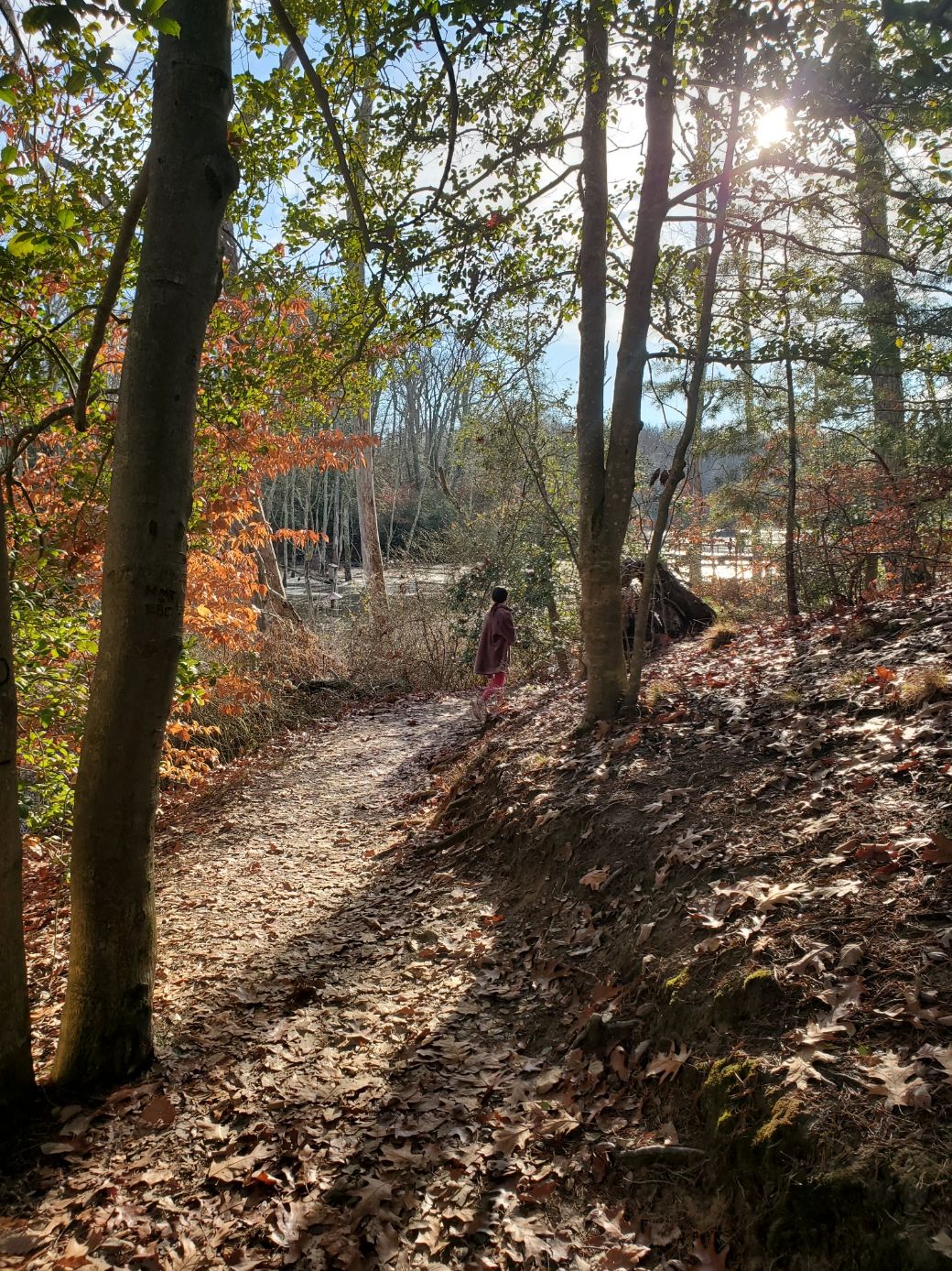
After the damp and dreary weather on New Year's Eve, we were treated to some unseasonably warm weather (around 65 degrees F) with a whole lot of sunshine. I have always liked the idea of a first day hike, so I convinced the family to join me at one of our favorite local parks, Mason Neck State Park, on beautiful Mason Neck in Northern Virginia. We love the trail network in the park and with my annual state parks pass, we're frequent visitors. One of our favorite trails is a short mile-long route called the Bay View Trail. As its name implies, it takes you along the banks of Belmont Bay at the confluence of the Occoquan and Potomac Rivers.
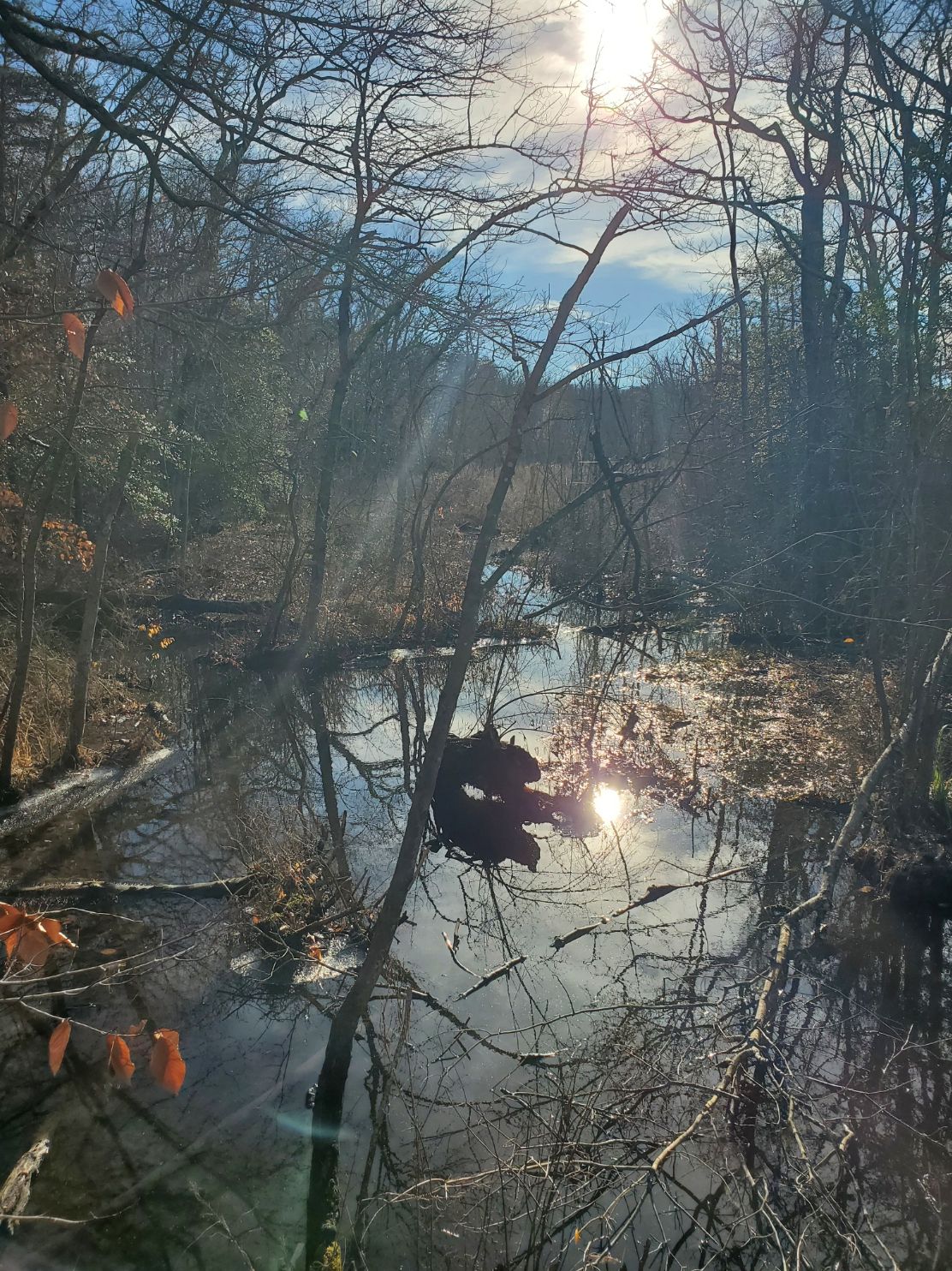
The trail is a real gem with incredibly varied scenery for such a short route. The trail starts at the parking lot for a picnic area where you're greeted by signage that reminds you that you're along the Star-Spangled Banner NHT and points out some history for you to enjoy. The trail also coincides with a stretch of the Potomac Heritage Trail NST and the water that it borders is part of the Captain John Smith Chesapeake NHT. Of course the State Park itself is a listed POTA entity, so if you're in the right place, you get 4 parks for the price of one. As you walk beside the bay you cross over the outlet of a marshland and come to a boardwalk that takes you to a beach on the bay that is quite beautiful. Then the trail goes over the marsh via a boardwalk, up a hillside to a point with a observation blind overlooking another part of the marsh, and then into a forest area that provides yet another ecosystem to enjoy. We have done this hike numerous times, but it never gets old.

After we finished our hike, the family was ready for a late lunch, but allowed me to get in a super-fast activation. Luckily, our parking spot was within range of all 4 parks, so we were able to get a 4-fer going with my mobile setup. I didn't want to make them wait a long time, and I also didn't want to annoy them with too much beeping, so I set up for 20m SSB and after some trouble finding a spot on the band spotted myself and started calling CQ POTA. It didn't take long to get a call back from a station in Illinois, followed by Georgia, a Park to Park contact with Stones River National Battlefield in Tennessee, another Park to Park contact with Tishomingo State Park in Mississippi, another contact with Georgia, a Park to Park contact with Arthur R. Marshall Loxahatchee National Wildlife Refuge in Florida, and another Georgia contact who let me know that I was being crowded in a bit by some stations in Texas. So I decided to move up 2 kHz and after re-spotting and calling CQ for a couple minutes I was back in action with a contact in Arkansas, followed by Illinois, Georgia, Illinois again, another Park to Park contact with Elk River Lodge State Park in Alabama, a contact with Tennessee, and two contacts with Missouri. Next up I had another Park to Park contact with Fred Gannon Rocky Bayou State Park in Florida, followed by contacts with Wisconsin, Georgia, Texas, and finally another with Florida.
For the first time in a while there was no answer to my CQ, so I decided to call it an activation so we could head to a nearby chili parlor for a hearty post-hike repast. This was probably my fastest activation ever with 20 contacts in 14 minutes. Not bad at all, and since it was a 4-fer, that technically 80 contacts in 14 minutes. This park holds a special place in my heart as it was also the first park I ever activated. That activation probably could have been a 3-fer based on where I set-up, but I didn't know that at the time, so it is in the logs just as the one. It was good to get it back on the air again. I was chatting with some friends tonight who also activated today and they saw me in the spots, but I was a bit too quick for them to be able to make the contact. They are frequent activators and we're in each other's logs several times, so we'll get it done next time. We really do have a great community doing Parks on the Air.
Happy New Year to you and yours and until next time, 73.

Activation QSO Map: Red Pins = SSB / Blue Lines = 20m
Gear used in this activation
- Yaesu FT-891
- Yaesu ATAS 120A Antenna
- 2006 Honda Accord EX V6
- Samsung Galaxy S10+
- HAMRS Logging App
Posted on January 2nd, 2023
POTA Activation #36: New Year's Eve with 4 Bands and 4 Parks-in-one with the XYL at George Washington Memorial Parkway, Potomac Heritage Trail NST, Captain John Smith Chesapeake NHT, and Star-Spangled Banner NHT (VA) (12/31/2022)
We were having an easy day at home for New Year's Eve and I asked my wife if she would like to go for a quick jaunt over to the park to do an activation with me. Much to my pleasant surprise, she said yes, and we were off in the car to one of the 4-fer spots near my house. The weather was pretty dreary with rain and fog enveloping the Potomac, but since we were using my new mobile setup, we were cozy and dry in an almost empty park. Normally we can see the dock for Mount Vernon, but today, the fog over the Potomac was thick enough that our visibility did not include the dock.
Before leaving the house, I had a look at the MUF map, and saw that all the bands from 10m down should be open, so I decided to get started on 10m SSB and work my way down from there. I offered to let my XYL run the mic in a control operating situation under my call, but she opted to just soak in the fog laden scenery and listen in. Unfortunately, I only thought about pictures after we had headed home, so I don't have any pictures to share of this activation, save the activation map below.
I got my FT-891 set-up on a blank patch of spectrum in the technician portion of the 10m band, tuned up the ATAS 120A, spotted myself on POTA and started calling CQ on SSB (I thought my XYL would appreciate to hear the voices from far off places instead of the incessant beeping that only an amateur radio operator can love). Pretty quickly I heard back from a station in Arizona, and after a few more minutes I got a call back from Saskatchewan (Canada), Idaho, Minnesota, Saskatchewan (Canada) again, and finally Venezuela. My signal was getting out, but there weren't too many people on, so after giving another try for about 10 minutes, I moved on down to the 12m band.
On 12m, things started slowly, but I got a booming signal from Puerto Rico coming in, and had a nice quick QSO thanking him for his call and wishing him a very Happy New Year. After a few more minutes I got a response from Wyoming and then there was much calling of CQ, but not much in the way of a response. So I moved the VFO down to 15m, gave the ATAS a tune, and tried yet another band.
The first call was from Texas, then Minnesota, Kansas, Illinois, Wyoming, Nevada, Colorado, Iowa, Florida, Missouri, Arkansas, Minnesota, and Missouri. Then I heard a station from Panama and had a nice chat thanking him for his call and wishing him a very Happy New Year. He was followed by Florida, California, Missouri, Texas, Missouri, Idaho, Florida,and one last call from Idaho.
All-in-all I had 32 contacts in 50 minutes, all on SSB. Pretty respectable considering the higher bands were slower going than the lower ones. I would have kept on going, but we were getting close to dinner time, so it was time to call QRT and head on home. It was fun having my wife along with me and being able to activate when the weather outside was dreary.
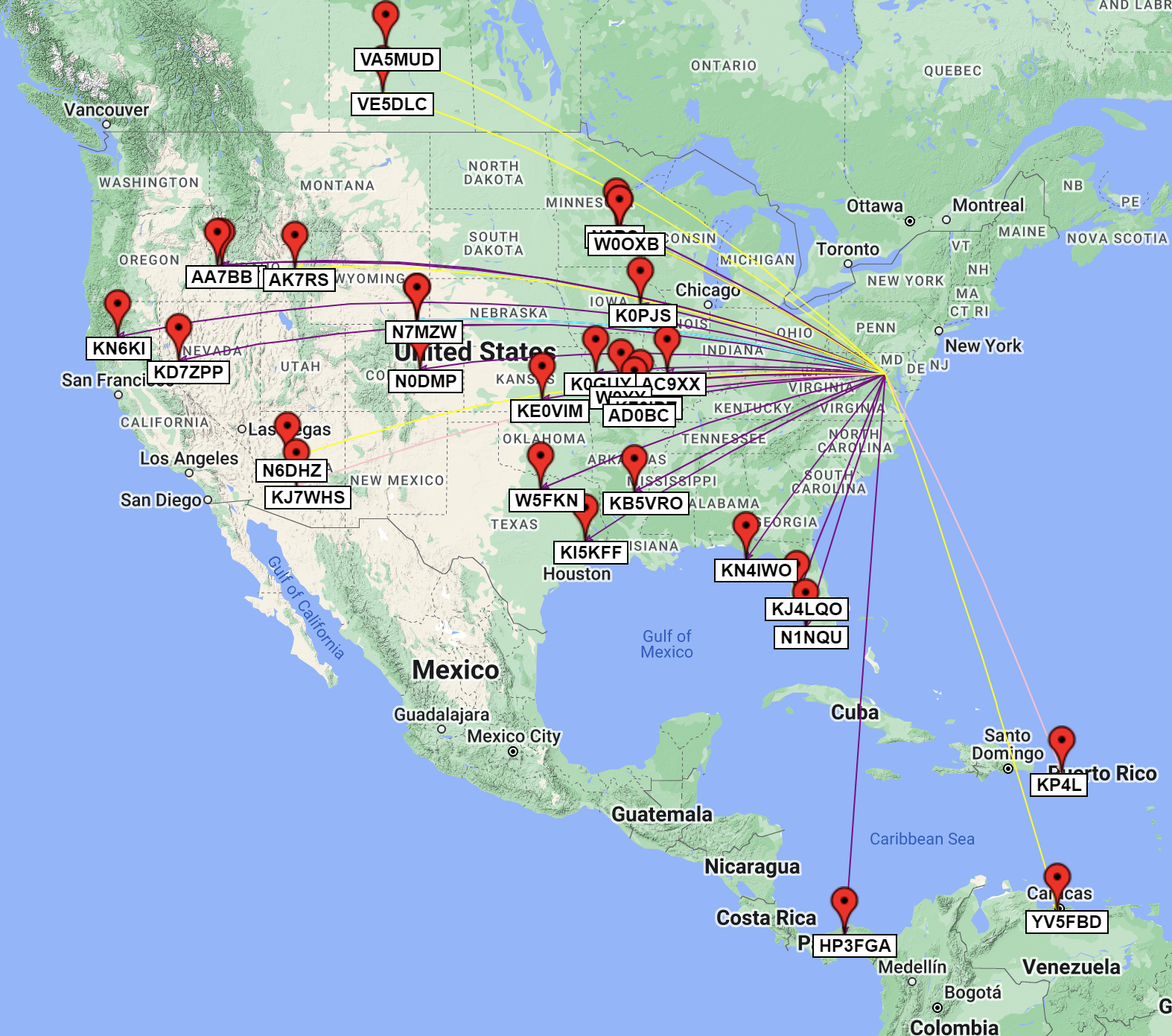
Activation QSO Map: Green Pins = CW, Red Pins = SSB / Purple Lines = 17m, Cyan Lines = 15m, Pink Lines = 12m, Yellow Lines = 10m
Gear used in this activation
- Yaesu FT-891
- Yaesu ATAS 120A Antenna
- 2006 Honda Accord EX V6
- Samsung Galaxy S10+
- HAMRS Logging App
Posted on December 31st, 2022
POTA Activation #35: 6 Bands, 149 contacts, and DX Aplenty at Seabranch Preserve State Park (FL) (12/26/2022)

The day after Christmas I had some time in the early part of the day and I decided to get in a solid activation of a new park. Unlike the earlier activations this week, I didn't have to rush things, so I decided to spend some time on as many of the bands as I could on both CW and SSB. Before leaving our rental, I looked at the Maximum Usable Frequency (MUF) map and saw that 10m should be open, so I hoped to work 10 on down. My park for the day was Seabranch Preserve State Park just South of Port Salerno in Florida. There was a trailhead right off Dixie Highway where I parked, as far away from the power lines as I could.
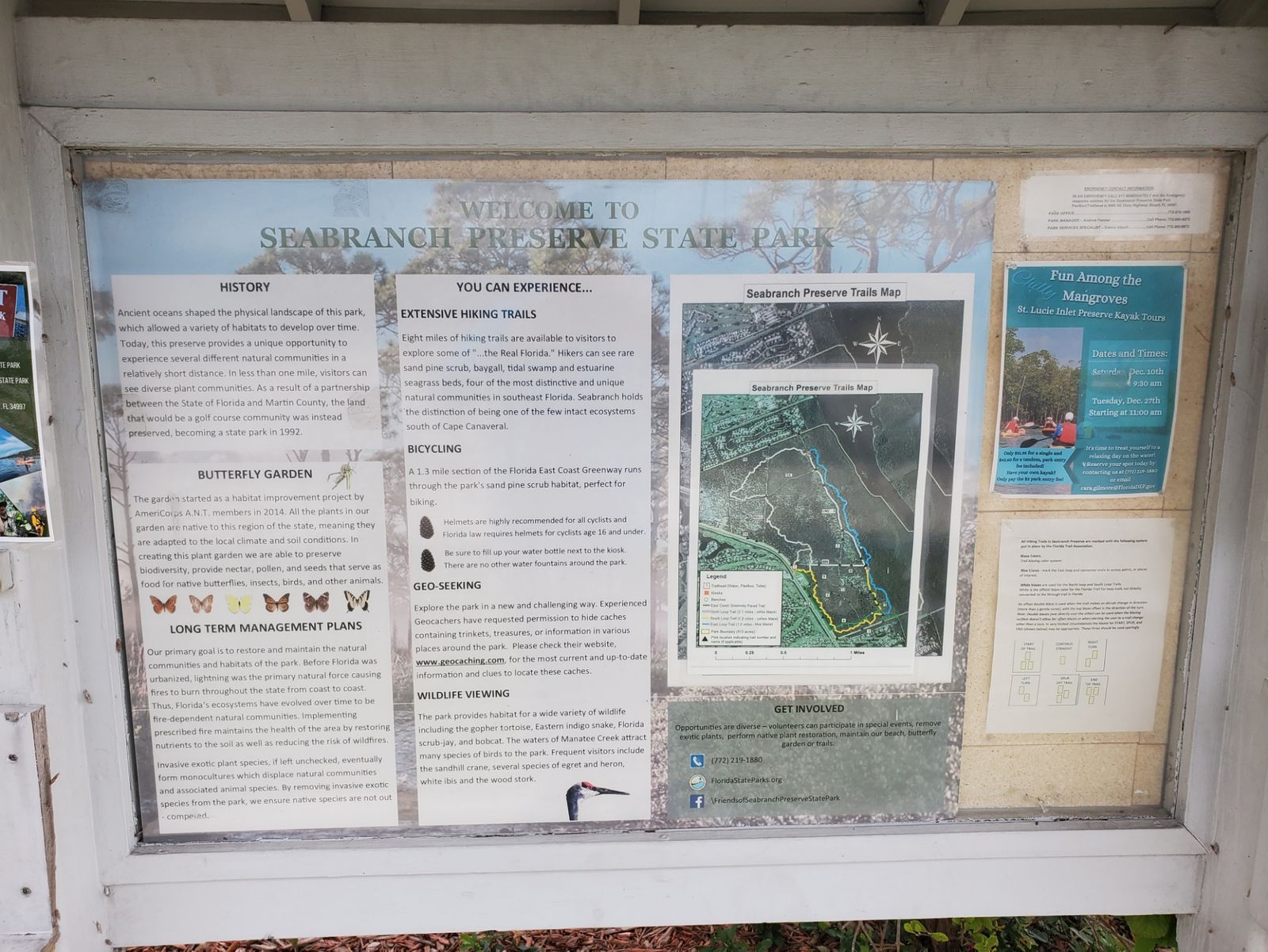
From what could see that was the only part of the park that allowed motorized vehicles, but there were extensive trails on offer that I would very much like to visit on another day when the weather is more cooperative. The temperatures were on the cool side for Florida, due to the unseasonable cold snap that Florida (and much of the rest of the United States) was experiencing. Fortunately for me, I was running my mobile setup, so I kept comfortable as I got my radio ready for an activation.
I started on 10m on SSB in the Technician part of the band and got a quick response after I spotted myself from Nebraska. The going was slow, but I got another a few minutes later from Colorado, and after a few more minutes Maine. There was a fair amount of calling between contacts,and most of them were pretty light on the s-meter. Next came Massachusetts and Vermont. As things were slow going I decided to migrate to the CW portion of the band and then I got my first DX of the day from Germany blasting in at 599. Next I got a response from Colorado, then another German station, followed by a French station, followed by another French station (this time portable), followed by a station from Belgium. Next I got a station in New Mexico, followed by a French station, and a station in Croatia! Next up was a station from Arizona, followed by a station in Spain. The amount of DX I was getting off the back of my car with a "compromised" vertical antenna was blowing my mind. The band was definitely acting a bit weird, but it was working. It reminded me of some of the magic I experienced on the band when I got my Novice and Technician licenses all those years ago.
Since the stated plan was to get on as many bands as I could muster, I decided to hop on down to the 12m band (and announced that intention on frequency as I went QSY). Much to my surprise, the last Spanish station I worked on 10m was the first I worked on 12. On CW, that was followed by Maine and Illinois. I called CQ for a while, but wasn't getting a lot of responses on 12m, so I decided to call QSY again and hop on down to the 15m band.
Right away, it was clear that 15 was going to be more productive. Maine, Ohio (x2), Wisconsin, Michigan, Texas, New Jersey, Ohio, Kansas, New York, California, Illinois, New Jersey, Kentucky, Pennsylvania, Wisconsin, West Virginia, and New York followed. One of the stations I worked on 15 was fellow Long Island CW Club member, Drew, N2AKJ. Was nice to get him in the log.

As things slowed down on 15, It was time to make the jump to 17m. I made contact with stations in Indiana, Texas, Pennsylvania, Ohio, Virginia, Louisiana, Ohio, Minnesota, Tennessee, Idaho, and New Hampshire. Once again, things slowed down and it was time for yet another band change -- this time to one of the meat and potatoes bands for POTA -- 20m.
I knew it was likely that the pace would quicken once I got on 20m, and that likelihood was proven to be 100%. The first response came quickly from Virginia, followed by Oregon, Pennsylvania, Connecticut, Wisconsin, New York, Idaho (a second band for a previous caller on 17m), Louisiana, Indiana, New Jersey, Colorado, Tennessee, Georgia, Illinois, some DX from the Azores, New Jersey, Indiana, Arizona, another Indiana, Florida, New Jersey, Kansas, New Jersey, North Carolina, Michigan, New Jersey, Indiana, Rhode Island, Georgia, New York, Indiana, Texas, Illinois, North Carolina, Pennsylvania, Washington State, some DX from the South of Spain, and Indiana.
Once again I was treated to a contact with Thomas, K4SWL in North Carolina. As usual I took some time to slow things down and say hello. Then it was back to this amazing pileup with stations in Alabama, Louisiana, Missouri, Kansas, Maine, Pennsylvania, California, Illinois, South Carolina, Georgia, Michigan, New Brunswick (Canada), Virginia, North Carolina, Connecticut, North Carolina, Ohio, Pennsylvania, Tennessee, Michigan, Wisconsin, Texas, Ohio, West Virginia, Wisconsin, Texas, Quebec (Canada), Kentucky, and finally Wisconsin. Things had been going fast and furious for the last 91 minutes, and finally there was a bit of a break. So, I figured it was now or never if I wanted to move down to another band, so I took the leap down to the 30m band.
On 30m I got calls from South Carolina, Florida, South Carolina again, Indiana, Alabama, and Tennessee before things stalled once again. So I thought time to jump down to the 40m band and get another band in the logs ... but alas it was not to be. I tried for 15 minutes, but go no callers back on 40m CW. I could see myself getting out on the Reverse Beacon Network, and I was spotted on POTA with that, but never heard any responses to my CQs. So with my ATAS 120A fresh out of unworked bands (save 6m, which the MUF indicated would not work). I decided to shift modes again, this time to SSB, and bands again, once again to the 20m band which had been on-fire just minutes before.
It was not long until I got callers back form Missouri, Florida, Texas, North Carolina, Florida, North Carolina, Georgia, and South Carolina. I decided to band hop again, this time up to the 17m band where I made contact with Minnesota, Virginia, West Virginia, Virginia again, New York, Michigan, Ohio, and Virginia once more. Then I was treated to a contact from none other than my buddy Bill from the Mount Vernon Amateur Radio Club, WB4KFO. He had seen me on the DX spots and we had a quick chat on the air. It was great to talk with him -- I usually get to catch up on the weekend Cherry Tree Net with him, but since I don't have an antenna that can do 80m down here in Florida, I wasn't able to check-in this week. I was delighted to have a QSO with him. Once we said 73, it was back to the activation with contacts on 17m with Missouri, New York, Missouri again, Texas, and finally a DX contact that looked like it was from Iran ... but the call doesn't resolve on QRZ, so may not have been what it appeared to have been.
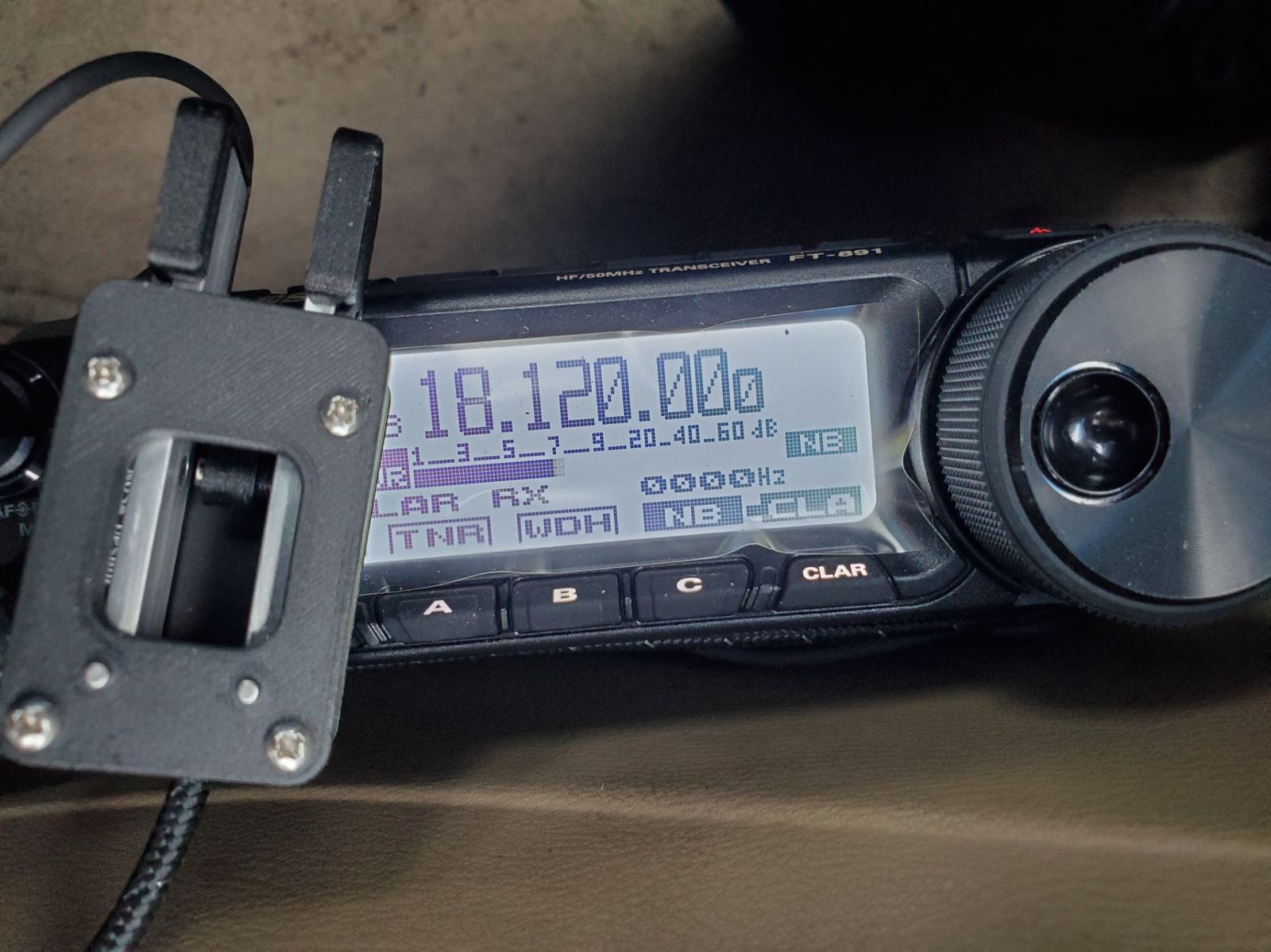
It was one heck of a run on the bands and so much fun. The activation had run longer than expected and I needed to call it day, so after 4 hours and 20 minutes I called QRT after making 149 contacts in the United States, Canada, Azores, Spain, France, Belgium, Germany, and Croatia on both CW (121 QSOs) and SSB (28 QSOs). I also had the pleasure of making contact with some friends along the way. Since the map is a bit more densely packed than usual, I gave two renderings below. The first shows all contacts, and the second shows the US and Canada a bit closer so you can see things a bit more clearly. The FT-891/ATAS 120A combo has really shown it can perform across the bands and give some fun DX. Definitely looking forward to whatever park is next.

Activation QSO Map (International): Green Pins = CW, Red Pins = SSB/ Orange Lines = 30m, Blue Lines = 20m, Purple Lines = 17m, Cyan Lines = 15m, Pink Lines = 12m, Yellow Lines = 10m
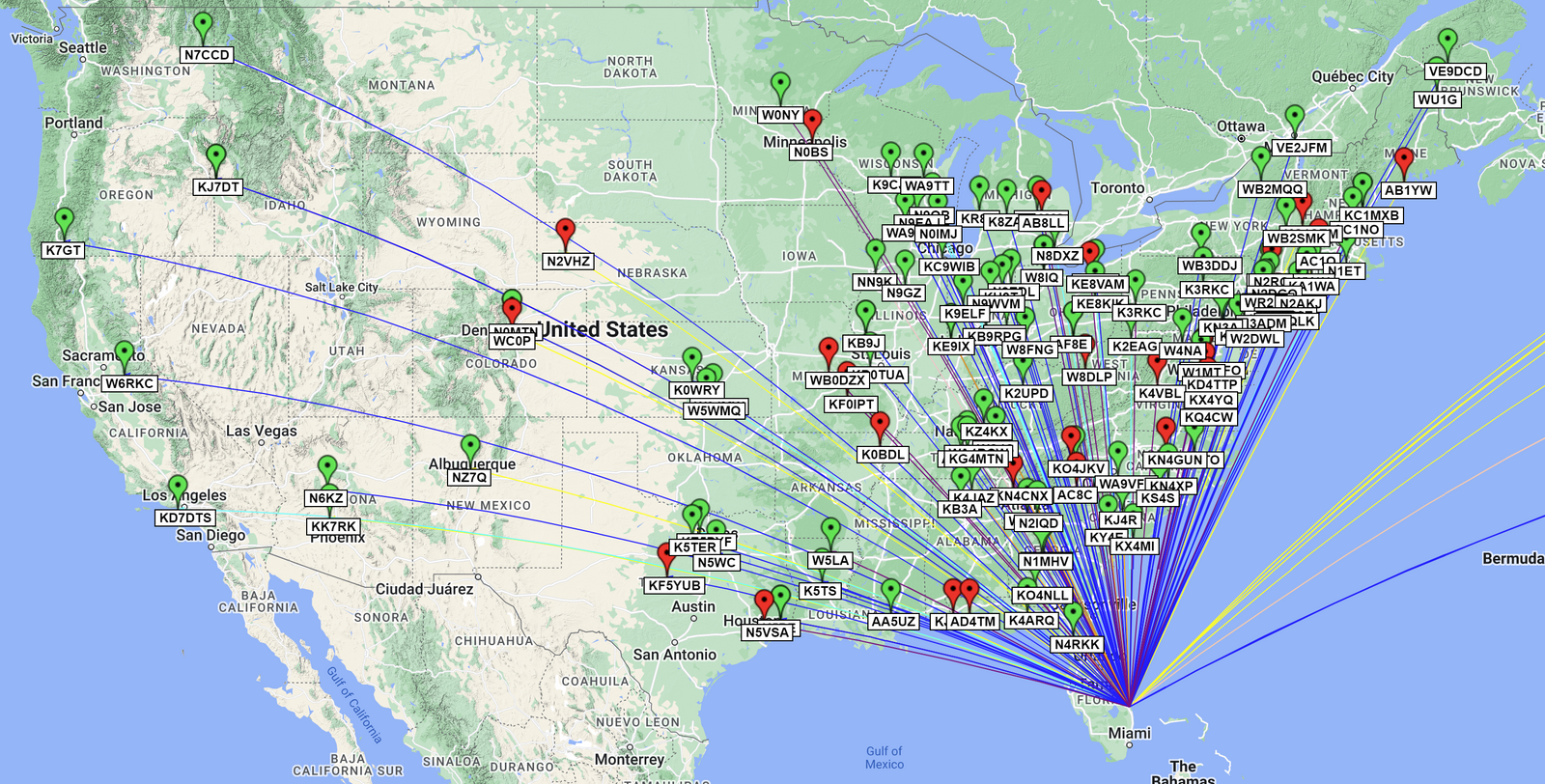
Activation QSO Map (US Detail): Green Pins = CW, Red Pins = SSB/ Orange Lines = 30m, Blue Lines = 20m, Purple Lines = 17m, Cyan Lines = 15m, Pink Lines = 12m, Yellow Lines = 10m
Gear used in this activation
- Yaesu FT-891
- Yaesu ATAS 120A Antenna
- CW Morse SP4 POTA/SOTA Mini Morse Code Magnetic Paddle (N0SA Designed)
- 2006 Honda Accord EX V6
- Samsung Galaxy S10+
- HAMRS Logging App
Posted on December 27th, 2022
POTA Activation #34: Just Passing Through POTA at St. Sebastian River Preserve State Park (FL) (12/23/2022)

The trip to St. Sebastian River Preserve State Park took us on a bit of a detour from the direct route to our destination after we had to take a pit stop along the way. We ended up winding our way through suburban Palm Bay until we got to the visitor center. The center was quite nice with helpful staff and a nice parking lot for the activation as well as rest room facilities. Interstate 95 runs through the middle of the park, so we could have conceivably activated from the side of the road, but that would have been significantly less pleasant.
My mom decided to go and check out the visitor center while I got the third and final activation of the day underway. 20m had been good to me, so I decided to give it another go, once again on CW.
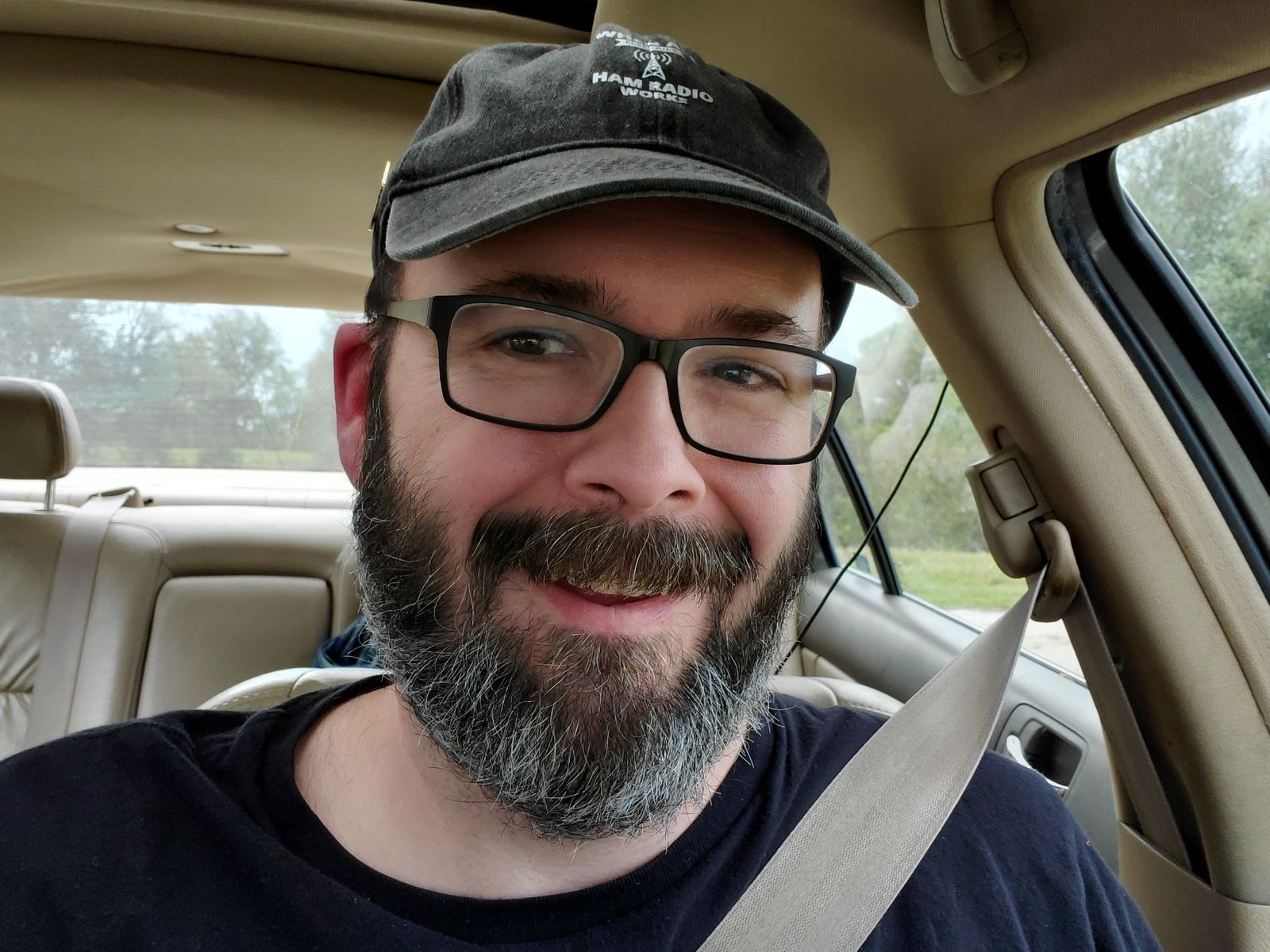
I pulled out the phone, spotted myself on 14.042 MHz, and started calling CQ on my CW Morse SP4 paddle. Now safely away from power transmission lines, the sweet sounds of an S0 noise floor allowed me to hear every signal as Yaesu intended. My first call back was from North Carolina, followed by Maine , and Maryland. A good start from my location in Florida. Next I heard from Wisconsin, Texas (a station who also worked me in the previous park), North Carolina, Alabama, West Virginia, a pair of Pennsylvania stations, and Ohio.
Then I was treated to a very familiar call, K4SWL. I was very happy to hear Thomas and to get him in the log. I slowed down the pace a bit to say hello and thank him before getting back to the pile-up that the activation had attracted. Next up was a station from Maryland, one from Minnesota, a pair from Tennessee, one from Massachusetts, a Virginia station with a great CW call sign (W5FB -- FB is used in CW to mean "Fine Business" when you're positively acknowledging something someone had sent you), Texas (this time from another repeat hunter), Kentucky, Texas, Louisiana, Virginia, Florida, New Jersey, Illinois, Tennessee, and finally one last caller from Texas. I had a pause in the pile-up for the first time, so I let the silence hang there for a few moments and finally called QRT DE N2EC and the activation was complete.
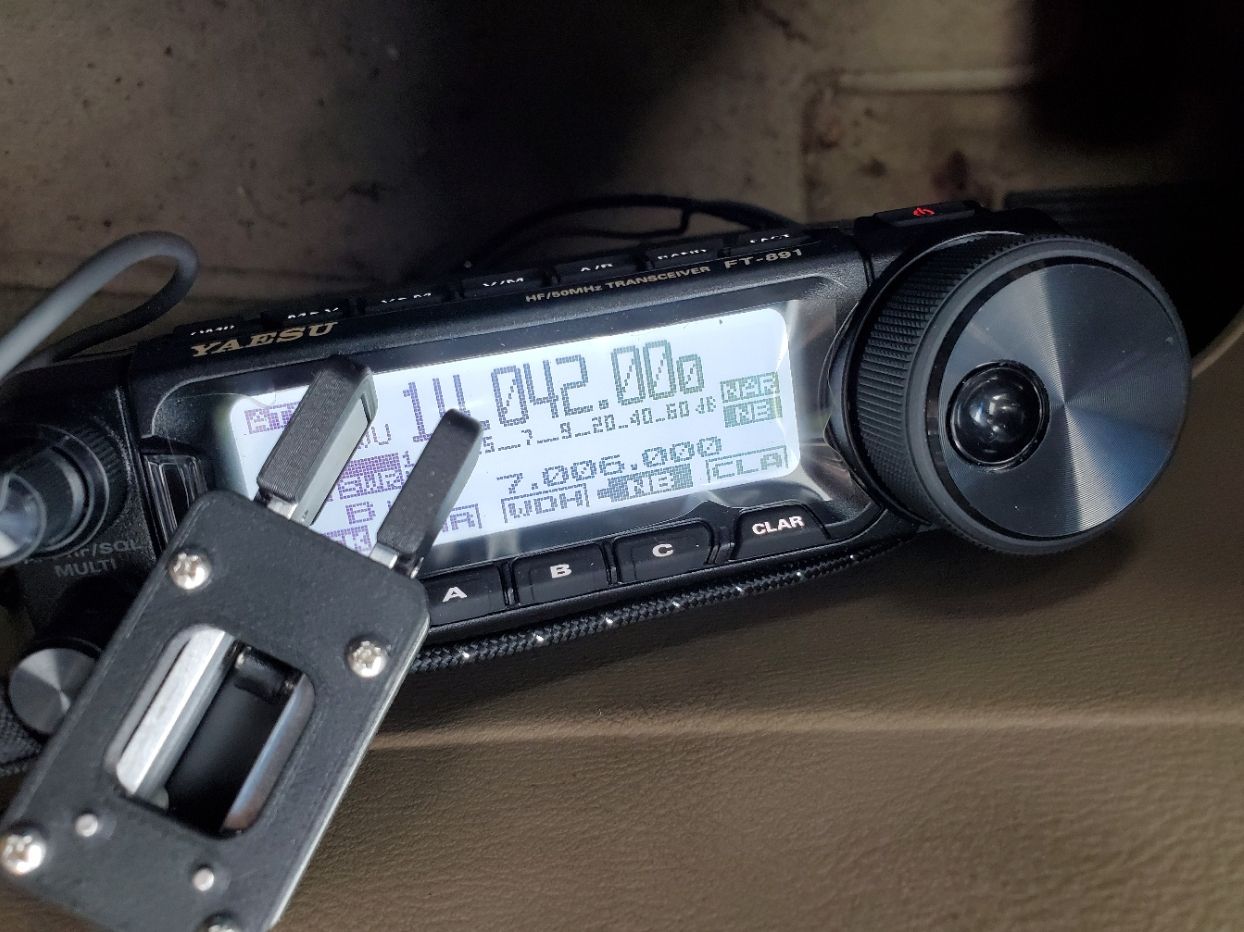
All told, in 37 minutes on the air I made 31 contacts and had a whole lot of fun in the process. It would have been nice to explore this park a bit more as it looks like it has a lot to offer, but I was expected down in Stuart, so I put away my key and left the park with another activation in the books. While I've technically activated more parks in a single day when doing my 4-fer activations, this was my first time doing multiple parks in multiple locations in a single day. I did do two locations in Shenandoah National Park in one calendar day, but it was two different Zulu days. The new Yaesu FT-891 paired with the ATAS 120A is really showing itself to be a solid performer and I'm excited to have it as part of my park activating toolkit.
I hope to get a proper rove in sometime soon. POTA has awards for activating 5, 10, 15, 20, 25, and 30 parks in a single Zulu day. There used to be distance requirements depending on the mode of transportation, but now it is just individual references. It would be fun to see just how many I can activate when I get back home, and if multi-park activations count, there are some good places to help raise the number of parks a bit in the DC area.
For now, I hope to be able to activate more while on my trip to Florida, and if the scheduling works out, I'll post it here.
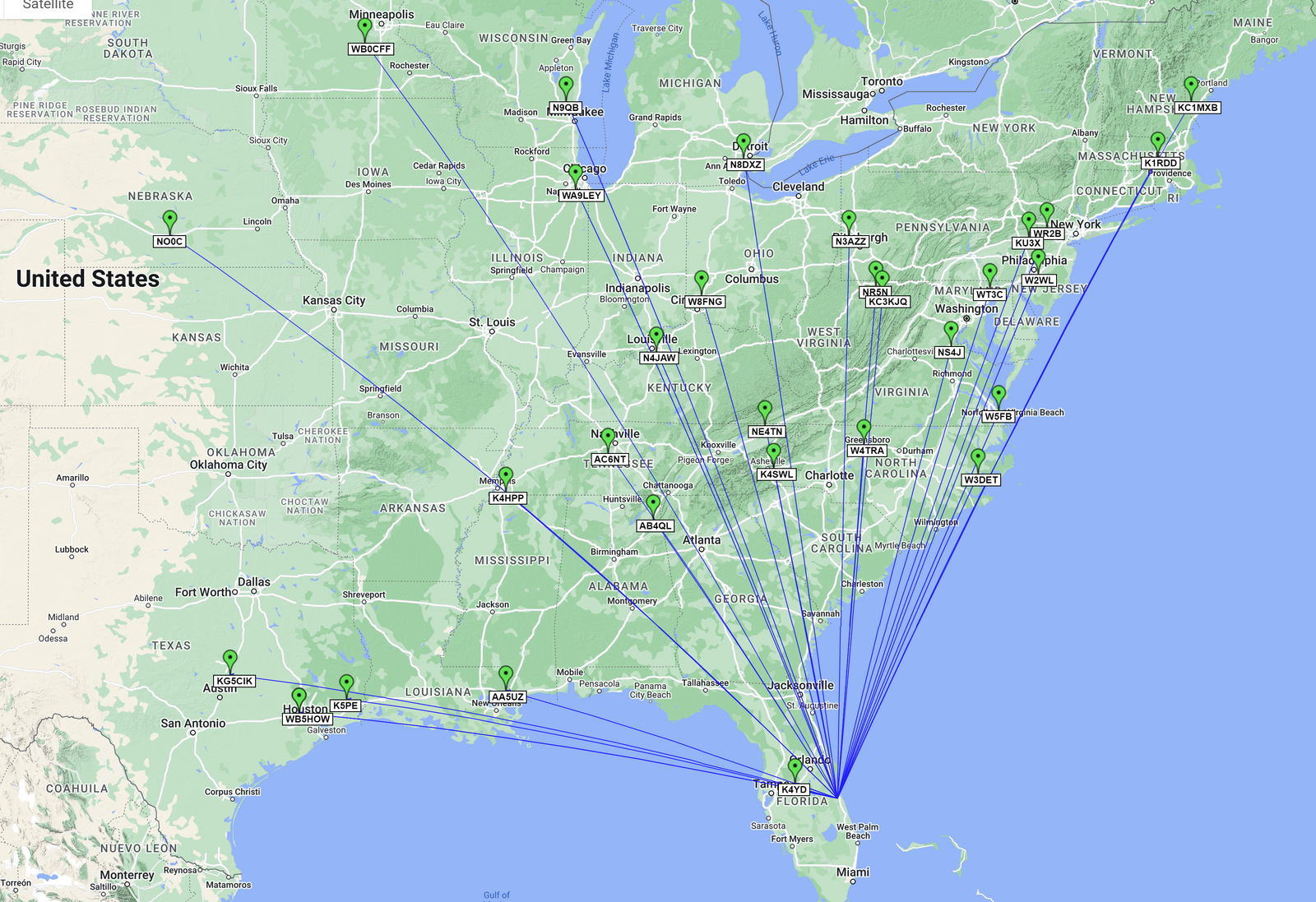
Activation QSO Map: Green Pins = CW / Blue Lines = 20m
Gear used in this activation
- Yaesu FT-891
- Yaesu ATAS 120A Antenna
- CW Morse SP4 POTA/SOTA Mini Morse Code Magnetic Paddle (N0SA Designed)
- 2006 Honda Accord EX V6
- Samsung Galaxy S10+
- HAMRS Logging App
Posted on December 24th, 2022
POTA Activation #33: QRM Heavy Just Passing Through POTA at Buck Lake Conservation Area (FL) (12/23/2022)

Fresh off my successful and quick activation of Lake Monroe State Conservation Area, I was excited to make our next brief stop at nearby Buck Lake Conservation Area just a few miles down the road. Google Maps had me overshooting my route to my final destination a bit, but as I was driving down route 46, I noticed there was a trailhead on the West side of the area that was right on the way. I decided to give it a go, and as I pulled in to park I noticed that the parking lot was right underneath some high voltage transmission lines. In the spirit of keeping things moving along I decided to give activating at the site a try and was curious what the power lines would do to the noise level on HF
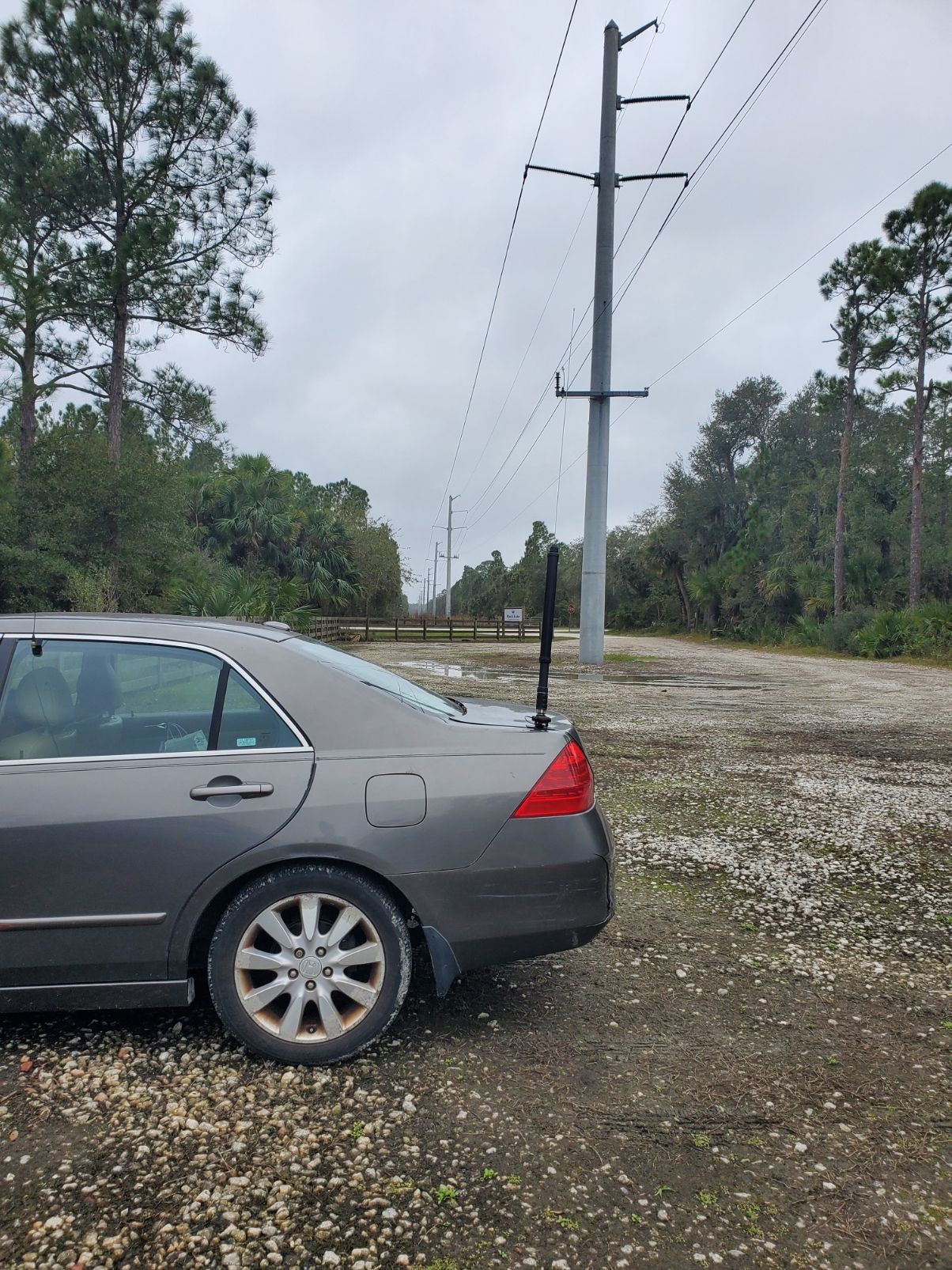
Spoiler alert: a lot.
I decided to set up camp on the same 20m frequency I was on at the last park, re-spotted myself, and started calling CQ. I noticed that I now had an S5 noise floor (up from the essentially S0 noise floor I enjoyed at Lake Monroe) but with the numerous S9+ signals I was getting before I figured it might still work out and ease the pile-ups a bit. As I got some calls back from my CQ, I noticed that the power lines were making things almost unintelligible. I cranked the noise blanker up to the maximum and although it was incredibly distorted, I was able to discern the code buzzing in at that setting. Pretty it wasn't, but it was able to work. The first intelligible call back was from Mississippi, followed by a pair in Texas, a Virginia station who worked me just minutes before at the previous park, Connecticut, Tennessee, Mississippi again, North Carolina, Texas, New Hampshire, North Carolina, Virginia, and finally Oklahoma. The going was slow, the copy was challenging, and seeing that I comfortably passed the threshold for activation, I called QRT with a sigh of relief.
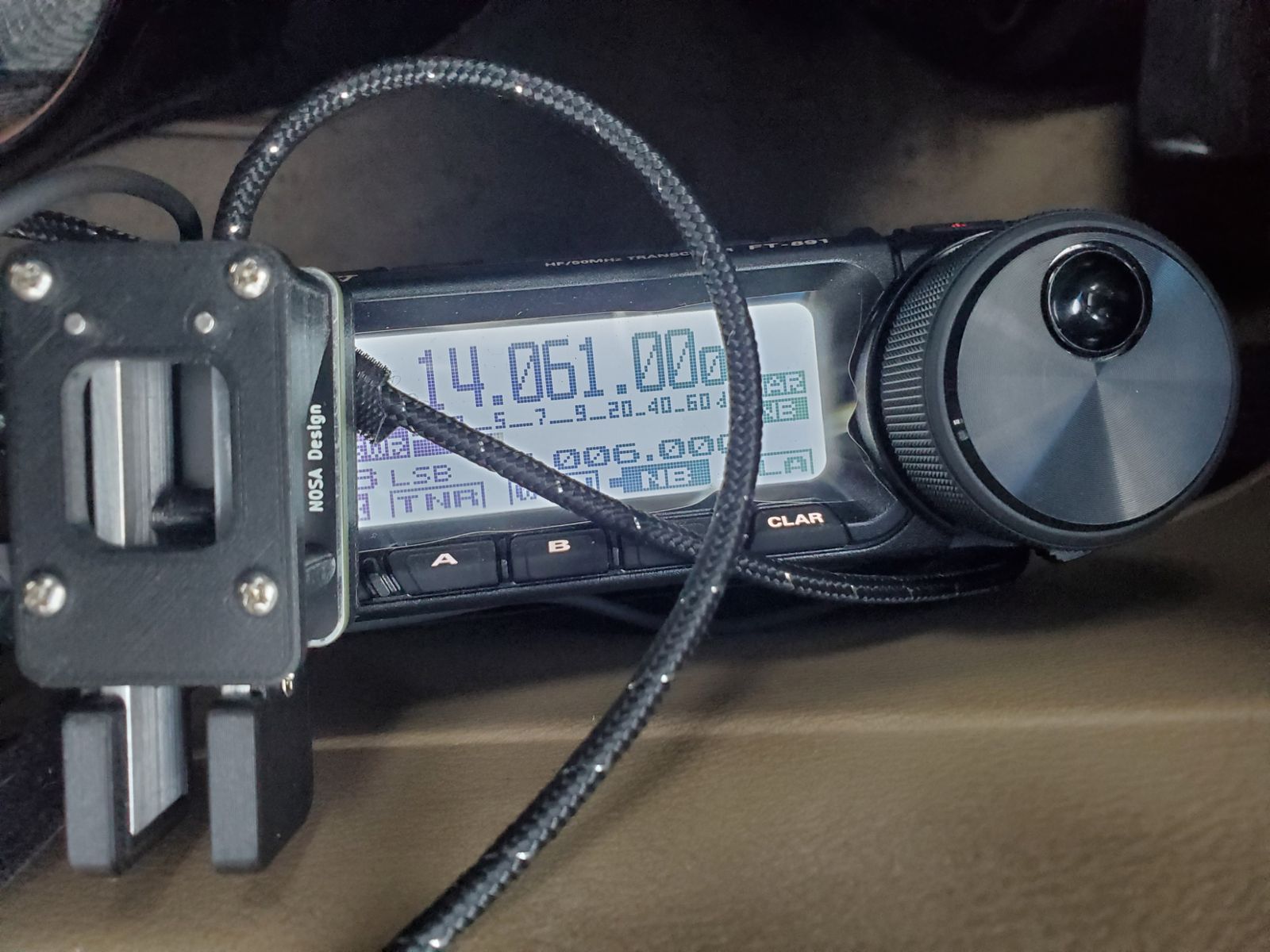
All in all I made 13 contacts in 21 minutes more or less all in a straight line between the western edge of Texas to New Hampshire. Definitely some of the most difficult noise I've had to contend with in an activation. I had one more park on the list for this mini-rove, and I set its coordinates into my navigation software and headed on my way hoping the next park would be a return to the silky silence of the parks I have enjoyed so often.
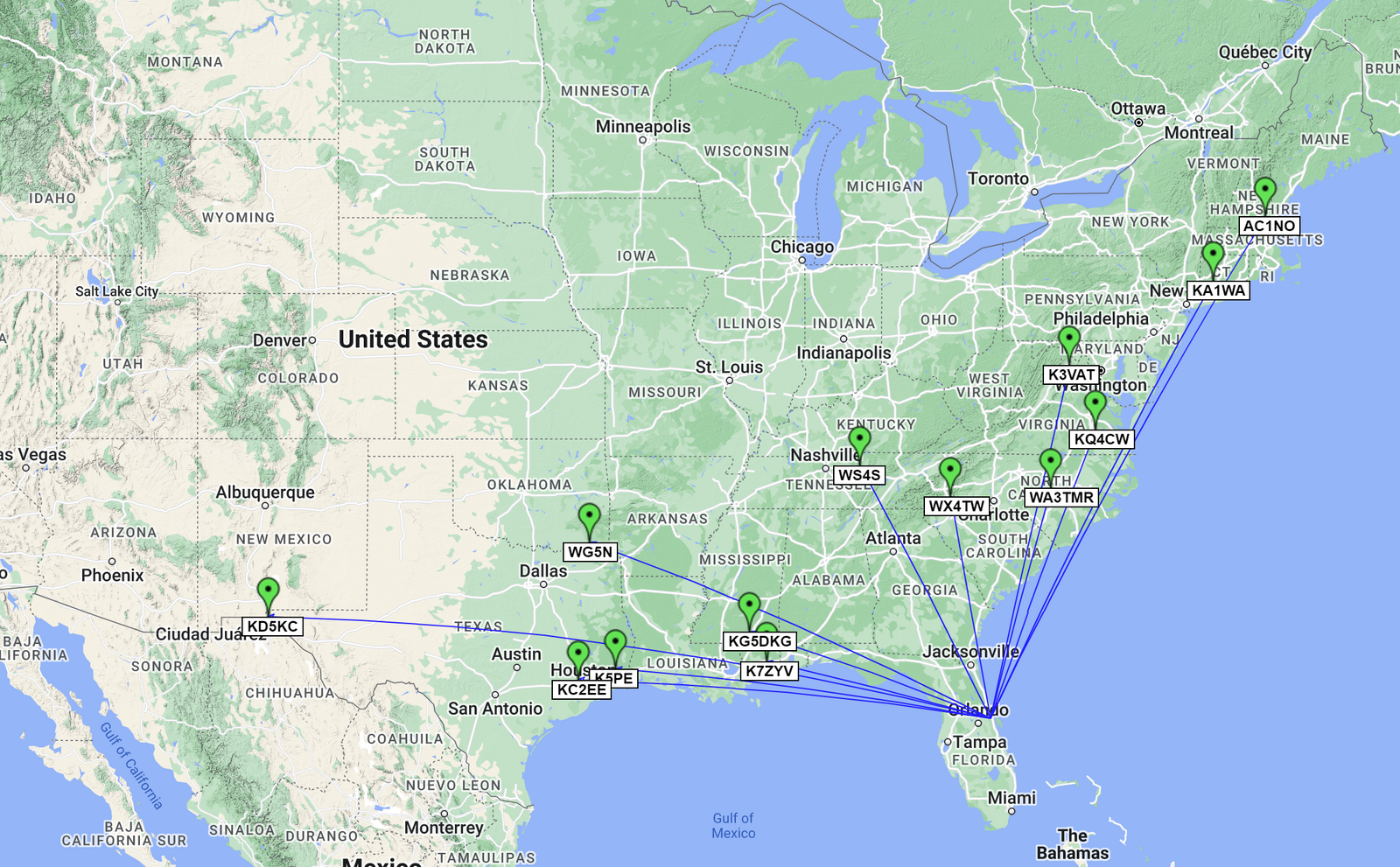
Activation QSO Map: Green Pins = CW / Blue Lines = 20m
Gear used in this activation
- Yaesu FT-891
- Yaesu ATAS 120A Antenna
- CW Morse SP4 POTA/SOTA Mini Morse Code Magnetic Paddle (N0SA Designed)
- 2006 Honda Accord EX V6
- Samsung Galaxy S10+
- HAMRS Logging App
Posted on December 24th, 2022

